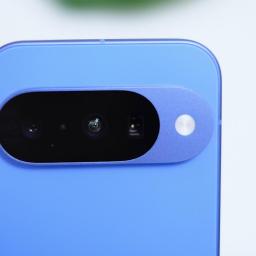 |
by Mat Smith on (#6ZN8J)
We've reviewed half of the Pixel 10 series, and Google continues to improve its phones in very tangible ways. We scored the Pixel 10 Pro 94, which is a high score, but well deserved. With brighter screens, a faster Tensor G5 chip and a bigger battery, a lot of the improvements are software based. Magic Cue uses on-device AI to surface relevant information from apps, reducing app-hopping.EngadgetThe camera app also introduces Camera Coach for shooting directions and to highlight various camera modes. While camera hardware is largely unchanged, the Pixel 10 Pro has a new Pro Res Zoom feature, using generative AI for up to 100x zoom, delivering sharper and just better looking" results than the Samsung Galaxy S25 Ultra's zoom, according to Sam Rutherford, who put the phone through its paces. This year's Pixels also support magnetic Qi2 wireless charging, with what Google calls Pixelsnap. (It's MagSafe for Pixels.)For those seeking a more affordable option, the Pixel 10, reviewed by me, now includes a 5x telephoto lens, surpassing other base flagships, like the S25 (3x) and iPhone 16 (2x), and incorporates all the Gemini features found in the Pro device. Also, I love the new Indigo Blue.Waiting on reviews for the new Pixel Watch and Pixel 10 Pro Fold? Expect those over the next few months - the Pixel 10 Pro Fold is set to be released in October.- Mat SmithGet Engadget's newsletter delivered direct to your inbox. Subscribe right here!The news you might have missed
|
 Engadget is a web magazine with obsessive daily coverage of everything new in gadgets and consumer electronics
Engadget is a web magazine with obsessive daily coverage of everything new in gadgets and consumer electronics
| Link | https://www.engadget.com/ |
| Feed | https://www.engadget.com/rss.xml |
| Copyright | copyright Yahoo 2025 |
| Updated | 2025-12-08 00:15 |
 |
by Mat Smith on (#6ZN8K)
Europe's biggest gameshow is a beast. Spanning the halls of Cologne Messe, and with E3 now out of the picture, Gamescom is a bigger deal than ever. The show also attracts thousands of public attendees, which gives the show a fairground twist in places. This year, Netflix dominated one of the halls with a faux One Piece ship, sports stadium, a Wednesday-themed cafe and a Stranger Things ice cream stall.Elsewhere, while Nintendo didn't have anything new to show, it had plenty of Switch 2 consoles to convince the not-yet-convinced - and some of them had Silksong. Microsoft, too, had a substantial presence, revealing an October 16 launch date for its Xbox Ally duo of handheld gaming PCs. No price, though.While you can find all the news and previews on our Gamescom page, we've also drawn together all the other games we tested during this week's show, several of which launch in the next few weeks.Metal Gear Solid Delta: Snake EaterKonamiWhile the man who created Metal Gear moved onto walking sims and Hollywood best friends, Konami is more than happy to beef up and remaster the hits. This time around, it's Metal Gear Solid 3: Snake Eater.I'll admit, Snake Eater was when I fell off the Metal Gear Solid train (or nuclear mech), and it came undone by the camouflage system and the difficult-to-navigate early areas. A very tight demo, as the Gamescom crowds rushed to early demos meant I didn't get a chance to fully test the new style control system that (thankfully) shifts crouch and action/ confirm to separate buttons and adds a degree of camera control even in third-person. But it's these kind of quality-of-life upgrades you can expect to see.Of course, the graphics are a huge leap from the PS2 original (or Nintendo 3DS version I bafflingly chose to buy), but the pulpy (occasionally delightfully camp) dialogue remains in place. I look forward to getting through at least the opening scenes now that the game has launched on PlayStation 5, Windows, and Xbox Series X/S.There Are No Ghosts at the GrandMicrosoftWhat a weird game. Not in a bad way. Things start off in the titular dilapidated Grand Hotel, with me renovating a room with PowerWash Simulator-inspired water guns, spray guns, sand blasters and vacuum. You can scan the area to get hints on what needs doing, while a naggy Scottish smartphone app will also try to help - but not really. There's also a talking cat, apparently, called Mr. Bones the Bastard, but he wasn't talking in this demo.The early trailer teased a mystery that needs to be solved in the village, and while I didn't get a glimpse of that, I was soon tasked with checking out some mysterious black gunk.The developers even put a little more effort into the demo, with voiced lines that will likely never be heard in the retail version, teasing that the protagonist was being onboarded" when he's interrupted by one of the characters that populate the village around the hotel.Seconds later, I'm riding a scooter to the dock, with a cat enjoying the ride, fixing a boat, getting a sassy soliloquoy from the woman who convinced me to drive my boat into the sea. There are plenty more songs to come as new characters join the mystery.As a reminder, the demo started with me sandblasting tatty wallpaper off period walls. I'm intrigued.While Hideo Kojima, the creator of Metal Gear, moved on to walking sims and Hollywood collaborations, Konami is more than happy to revamp and remaster its hits. This time, it's Metal Gear Solid 3: Snake Eater.I'll admit, Snake Eater was when I fell off the Metal Gear Solid train. It came undone at the difficult-to-navigate early areas and the camouflage system. A very tight demo, as the Gamescom crowds rushed to early demos, meant I didn't get a chance to fully test the new style control system that (thankfully) shifts crouch and action/ confirm to separate buttons and adds a degree of camera control even in third person. But it's these kinds of quality-of-life upgrades you can expect to see.Of course, the graphics are a huge leap from the PS2 original (or Nintendo 3DS version I bafflingly chose to buy), but the pulpy (occasionally delightfully camp) dialogue remains in place. I look forward to getting through at least the opening scenes now the game has launched on PlayStation 5, Windows and Xbox Series X/S.Resident Evil RequiemWe've got a more detailed breakdown by contributor Alessandro Fillari here, but I got a chance to get scared out of my skin too. The headline feature is the ability to play between first- and third-person perspectives. Still, it revealed an uncomfortable truth to myself: I'm a total coward and playing in third person is much less scary.Onimusha: Way of the SwordCapcomCapcom's return to its samurai vs. demons series is satisfying and fun, especially when compared to more punishing games in the genre, like Sekiro. However, the early chapters have a pretty basic attack flow, and I'm keen to see how things evolve beyond that. At least they've got one thing right: a great villain to loathe.Silksong: Hollow KnightThe long-running DLC-into-sequel-into-meme-sensation is almost here, right? The demo at Gamescom remained the most popular attraction at Microsoft's booth. Two Xbox Ally handhelds were also running the demo, which I was fortunate enough to test on. And I can say... yep, still plays like a faster, slicker Hollow Knight.Having played it a heady six years ago, it's now actually difficult to discern the differences between the early build and what is surely an almost-final snapshot of the game. One of the notable changes is its more elaborate lighting effects and details - things Redditors have pored over as each new trailer video appeared. I stand by my hands-on impressions from 2019, even if they have a fine vintage at this point.But when is it coming out? Oh, September 8.All the announcements from Gamescom 2025
|
by Valentina Palladino,Amy Skorheim on (#6E4KV)
Your Apple MacBook is already a powerful, sleek machine - but the right accessories can make it even better. Whether you're trying to expand its ports, improve your workspace or boost your productivity on the go, there's no shortage of helpful add-ons designed specifically with Apple products in mind. From USB-C hubs and external drives to stands, keyboards and protective sleeves, the best MacBook accessories help you get more out of your laptop without sacrificing style or portability.
 |
on (#6ZMYV)
Developers building for Meta's metaverse platform will soon be able to create AI-powered NPCs for Horizon Worlds. The company previewed the move, which is coming very soon" as part of a developer update that adds new generative AI tools for developers.Once available, developers will be able to use Meta's Worlds Desktop Editor to create NPCs that can hold lifelike" conversations with players via voice chat. The company has previously experimented with NPCs for its metaverse, but the upcoming update will be the first time developers have access to customizable embodied characters.For players, this means the NPCs they encounter will be able to engage more dynamically and respond to specific interactions rather than only relying on scripted responses. In a blog post, Meta shared a video that shows how developers can customize their characters' appearance and create a backstory and instructions that determine how it responds to players.The update is the latest way that Meta has been steadily merging its AI and metaverse ambitions. And given that its Connect event is just a few weeks away, there's a good chance we'll hear more about how generative AI is changing Meta's virtual worlds very soon. In the meantime, anyone who wants to see some of these new AI NPCs in action can check out characters in Bobber Bay Fishing and Profit or Perish.This article originally appeared on Engadget at https://www.engadget.com/social-media/meta-is-bringing-ai-powered-npcs-to-the-metaverse-231605236.html?src=rss
|
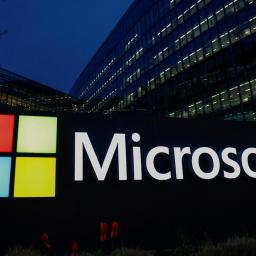 |
by Anna Washenko on (#6ZMTP)
Microsoft is expanding its AI footprint with the release of two new models that its teams trained completely in-house. MAI-Voice-1 is the tech major's first natural speech generation model, while MAI-1-preview is text-based and is the company's first foundation model trained end-to-end. MAI-Voice-1 is currently being used in the Copilot Daily and Podcast features. Microsoft has made MAI-1-preview available for public tests on LMArena, and will begin previewing it in select Copilot situations in the coming weeks.In an interview with Semafor, Microsoft AI division leader Mustafa Suleyman said the pair of models was developed with a focus on efficiency and cost-effectiveness. MAI-Voice-1 runs on a single GPU and MAI-1-preview was trained on about 15,000 Nvidia H-100 GPUs. For context, other models, such as xAI's Grok, took more than 100,000 of those chips for training. "Increasingly, the art and craft of training models is selecting the perfect data and not wasting any of your flops on unnecessary tokens that didn't actually teach your model very much," Suleyman said.Although it is being used to test the in-house models, Microsoft Copilot is primarily built on OpenAI's GPT tech. The decision to build its own models, despite having sunk billion-dollar investments in the newer AI company, indicates that Microsoft wants to be an independent competitor in this space. While that could take time to reach parity with the companies that have emerged as forerunners in AI development, Suleyman told Semafor that Microsoft has "an enormous five-year roadmap that we're investing in quarter after quarter." With some concerns arising that AI could be facing a bubble-pop, Microsoft's timeline will need to be aggressive to ensure taking the independent path is worthwhile.This article originally appeared on Engadget at https://www.engadget.com/ai/microsoft-introduces-a-pair-of-in-house-ai-models-193003900.html?src=rss
|
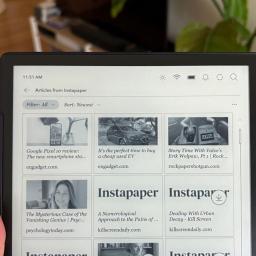 |
by Ian Carlos Campbell on (#6ZMTQ)
Rakuten and Instapaper have announced a new integration that lets you access saved articles on Kobo ereaders. The new feature replaces a similar one Rakuten used to offer for Pocket users, which it was forced to replace after Mozilla decided to shut down the read-it-later service in May 2025.Instapaper on Kobo devices works nearly identically to the way Pocket did previously. With your Instapaper account linked, you can access any article you've saved to your library. Articles can be downloaded and accessed offline, and you can like, delete or archive them as you see fit. As someone who relied on the Pocket integration to work my way through a ridiculous backlog of saved articles, Instapaper makes a capable replacement. Really, the only thing the feature is missing at this point is support for handwritten annotations on Kobos with styluses, like the Kobo Libra Colour or Kobo Elipsa 2E.Mozilla made the decision to wind down Pocket and a few other smaller products to conserve time and resources that might be better spent on Firefox. Instapaper itself was in decline following an acquisition by Pinterest in 2016, until the developers working on the service bought it back and took Instapaper independent in 2018.Pocket and Instapaper aren't one-to-one replacements for each other (Instapaper seems much less concerned with preserving images, for example) but they're close. For anyone who relied on Pocket, Rakuten replacing the service with Instapaper is a best-case scenario. The new Instapaper integration is available globally on all currently supported Kobo ereaders.This article originally appeared on Engadget at https://www.engadget.com/mobile/tablets/kobo-ereaders-are-swapping-out-pocket-for-instapaper-190615508.html?src=rss
|
 |
by Andre Revilla on (#6ZMRG)
More than 450 Diablo developers at Blizzard Entertainment have voted to unionize with the Communications Workers of America (CWA). The union will represent employees across multiple disciplines including designers, engineers, artists and support staff. This comes after a slew of layoffs in the gaming division at Microsoft, Blizzard's parent company, as well as across the industry at large.The Diablo team isn't the first to unionize at the tech giant. ZeniMax QA workers reached a union contract with Microsoft after two years of negotiations, and Blizzard's Story and Franchise Development team voted to unionize earlier this month. Both are part of the CWA, which also helped the developers behind Overwatch unionize earlier this summer.Kelly Yeo, a Diablo game producer and organizing committee member, said that the mass layoffs at Microsoft were a major motivating factor in the unionization. "With every subsequent round of mass layoffs, I've witnessed the dread in my coworkers grow stronger because it feels like no amount of hard work is enough to protect us," she said. "This is just the first step for us joining a movement spreading across an industry that is tired of living in fear."CWA says that more than 3,500 Microsoft workers have organized with the union. Earlier this year, video game workers announced the formation of the United Videogame Workers-CWA, an industry-wide union for workers in the US and Canada.This article originally appeared on Engadget at https://www.engadget.com/gaming/over-450-diablo-developers-at-blizzard-have-unionized-180544383.html?src=rss
|
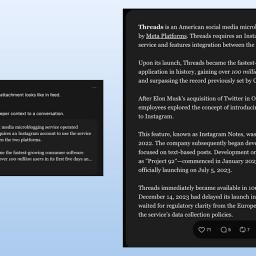 |
by Karissa Bell on (#6ZMRH)
Meta seems to be working on ways for Threads users to share long-form writing within a single post. Several users have reported seeing a new "attach text" feature on the service, which allows them to embed large chunks of text within a single post.The feature, which hasn't been formally announced by Meta, is similar to the "articles" feature that's available on X to Premium+ subscribers. It enables Threads users to embed longer text excerpts within a single Threads post and offers some basic formatting options. "Attach longer text and get creative with styling tools to share deeper thoughts, news snippets, book excerpts and more," Meta explains in a screenshot shared byThreads user Justin Mixon.Though the feature hasn't been rolled out widely yet, it appears that anyone can view these longer text snippets that have already been shared. On mobile, these attachments open into a full-screen view that makes it easy to scroll through the text. On threads.com, text appears in a dedicated window. (Here are a couple examples shared by Threads user Roberto Nickson.)Threads Screenshot It's not clear what Meta's plans are for the feature. Engadget confirmed the company is currently testing the ability to share long-form text, but it's not clear when it might be more widely available. The ability to embed long-form writing directly on Threads could open up new possibilities for creators, publishers and others who want to move beyond the service's 500-character limit.Engadget's reporting has found that the vast majority of Threads users don't click on links in posts, so giving users more flexibility within Threads itself could be helpful. At the same time, it risks making the 400-million user service even more insular. It's also worth noting that screenshots currently indicate posts with text attachments aren't able to be shared to services within the fediverse, which could potentially undermine Meta's goal to be interoperable with other ActivityPub-enabled platforms like Mastodon.This article originally appeared on Engadget at https://www.engadget.com/social-media/meta-is-experimenting-with-long-form-text-on-threads-175557130.html?src=rss
|
 |
by Will Shanklin on (#6ZMRJ)
Fubo is making a move to attract new subscribers ahead of the NFL season. The company's new Fubo Sports bundle includes content from ESPN, Fox and local affiliates. The football-friendly package costs $56 monthly.Fubo Sports includes over 20 sports and broadcast networks. You get all of ESPN's live channels (including ESPN+). As for Fox, it has FS1, FS2 and the curious inclusion (for a sports package) of Fox News. The bundle also has the ACC Network, Big 10 Network, CBS Sports Network, Fubo Sports Network, ION, NFL Network, SEC Network and the Tennis Channel.Additionally, Fubo Sports has local broadcast stations owned and operated by ABC, CBS and Fox. The company says additional affiliates will be available in select markets.Fubo says some content will be available in 4K. It will support VOD, Unlimited DVR and Family Share features.FuboYou can argue that Fubo's new sports package is the best value for football fans. At $56, it's pricier than the upcoming ESPN and Fox One bundle. (It arrives on October 2 for $40.) By comparison, Fubo's package includes all the same sports channels, as well as local stations (and more). NFL and college football fans subscribing to this could also likely skip Paramount+'s sports content. The football completist would only need to add Peacock for NBC's Sunday night games and Amazon Prime for its Thursday night matchups.Confused? Well, you aren't alone. In many ways, live TV streaming has become at least as convoluted as the cable TV it once promised to improve upon. Start with something simple, insert high stakes for wealthy corporations and watch a complex web of head-spinning shit come out the other side.Regardless, starting next week, you can try Fubo Sports for $46 for your first month. After that, it defaults to the standard $56. The bundle arrives on September 2, two days before the NFL season kicks off.This article originally appeared on Engadget at https://www.engadget.com/entertainment/streaming/fubo-sports-will-make-a-play-for-football-fans-dollars-on-september-2-164847466.html?src=rss
|
 |
by Igor Bonifacic on (#6ZMN4)
The RX1R III is an incredible camera, capable of capturing stunning photos. However, for something Sony waited nearly a decade to update and is charging $5,100 for, it also feels like a missed opportunity. First, the RX1R III is nearly $2,000 more expensive than its predecessor. Plus, it's missing a handful of features the company really should have included for it to hold its own against other high-end compact cameras, including Fujifilm's X100VI and GFX100RF, as well as the Leica Q3 family. I love the RX1R III, but I wish it was easier to recommend. Image quality and autofocus Igor Bonifacic for Engadget New to the RX1R III is a 61-megapixel full-frame sensor Sony first introduced alongside the A7R IV back in 2019. It might be an old component, but having so much resolution in a camera I could carry everywhere felt like cheating. What hasn't changed is the glass on the RX1R III. The camera still has the same fixed 35mm f/2.0 Zeiss lens that debuted on the original RX1R in 2012. With past models, autofocus was often an issue, but it turns out the Zeiss lens wasn't to blame. It was the focusing algorithms on the older cameras. Like the A7R V, the RX1R III comes with Sony's flagship Bionz XR image processor and a dedicated chip for AI-assisted subject detection. At first, I was skeptical of the RX1R III's autofocus capabilities since the camera doesn't come with a joystick to make it easy to set a focus point manually. As it turns out, it doesn't need one. The autofocus on the RX1R III feels magical, thanks to its subject tracking. The seven different recognition modes offered by the RX1R III cover most of the things I like to shoot - including people, pets and birds - and getting the camera to lock onto a subject was simple. All I had to do was press and hold the new "AF-ON" button. The camera can be configured to prioritize specific subjects, but I found that wasn't necessary to do; I could delegate focusing entirely to the camera. All of that brings me back to the RX1R III's Zeiss glass. I know some people will be disappointed Sony didn't add a new lens, but I'm a fan of the decision. For me, the character of that lens has always been part of the appeal of the series, and it's my favorite aspect of the new model. With Sony's 61MP sensor behind it, the Zeiss optics can capture photos with a great amount of detail without ever feeling clinical or overly sharp like with many of the company's G Master lenses. The best way I can describe the rendering is that it's Leica-like with beautiful, creamy bokeh. With the right light, the RX1R III can produce images that look almost painterly, and reviewing the photos I snapped with it, they're among some of the best I've captured in the 10 years I've been shooting. At the same time, I think Sony deserves credit for greatly improving the color science of its JPEGs. The company has long offered excellent RAW support, but the older I get, the more I appreciate a camera that can produce great images with minimal editing. With the RX1R III, Sony has delivered that. The camera offers a total of 12 JPEG profiles with six custom slots. Two of the default profiles, Film 2 and Film 3, are borrowed from the FX3, and offer calming, muted tones that are a nice contrast to the more vivid colors Sony is typically known for. As for video, there's not much to say. The RX1R III can capture 4K footage at 60 frames per second and 1080p clips at 120 fps. That said, as I'll get to in a moment, Sony's new model is missing some features that would have made it a competent video camera. As things stand, I think it's only suited for capturing home videos you don't plan to share with the world. Design and handling Igor Bonifacic for Engadget The first time I looked through the RX1R III's viewfinder, I thought Sony had sent me a defective unit. The redesigned EVF is now built into the top left of the camera, but the company seems to have pulled the screen from the parts bin, as it only offers 2.36 million dots of resolution. For context, the A7R V has a 9.44-million-dot OLED EVF, while the older A7R IV has a 5.76-million-dot screen. It's jarring going from the new rear-panel LCD and viewfinder. It also feels cheap. A $5,100 camera should include a top-of-the-line EVF. The viewfinder is not the only part of the RX1R III that left me confused about what Sony was thinking. There's the rear screen I just mentioned, which is both better and worse than the one before. On the one hand, it offers nearly double the resolution, thanks to its 2.36-million-dot panel. On the other hand, it's no longer articulating, which feels like a major step back since it makes shooting candid shots from the hip a lot harder. And forget about vlogging or taking selfies. Separately, Sony hasn't weather-sealed the III. Again, that's a feature I'd like to see on such an expensive camera. Thankfully, battery life is improved, with the RX1R III supporting Sony's larger NP-FW50 batteries. I could comfortably get a day of shooting out of the latest model if I was good about powering off the camera when I wasn't using it. I could overlook all the complaints I mentioned if Sony had just added in-body image stabilization (IBIS). When I reviewed the Fujifilm X100VI last year, that feature alone felt transformational. More than just improving image quality, it made the X100VI into a camera that could shoot in nearly any light. I understand Sony likely wanted to keep the III small and light, but again, $5,100 is a lot to pay to not have a feature that many high-end cameras offer. Wrap-up I've mentioned a few of the RX1R III's competitors in passing, but now I think it makes sense to consider where Sony's new camera fits in the market. Most people shopping for a premium compact camera will probably start their search with the X100VI. If you can find one in stock, it's significantly cheaper than the RX1R III, coming in at $1,800. Sure, you're forgoing a full-frame sensor for a smaller APS-C sensor. But for most people, I think that's a fair tradeoff, especially when the X100VI also offers IBIS, an articulating screen, an optical viewfinder and Fujifilm's excellent color simulations. If you want the largest possible sensor, I'd argue Fujifilm's GFX100RF, which has a medium-format 100MP sensor, makes more sense - even with all of its faults and a price increase coming at the end of the month. There are also the Leica Q3 and Q3 43 to consider. At $6,735 and $7,380 respectively, both are more expensive than the RX1R III, but come with nicer displays, IBIS and Leica glass. Like I said at the start, I wish the RX1R III was easier to recommend, but it occupies a strange space where it's not necessarily better or different enough from its rivals. Inflation and Trump's tariffs likely tied Sony's hands to a degree, but the company could have still made the new model more compelling by avoiding some of its questionable design decisions.This article originally appeared on Engadget at https://www.engadget.com/cameras/sony-rx1r-iii-review-waiting-10-years-to-be-underwhelmed-160036397.html?src=rss
|
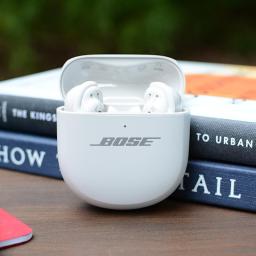 |
by Billy Steele on (#6ZMN5)
Bose announced its latest earbuds in June, but the QuietComfort Ultra Earbuds (2nd gen) ($299) won't arrive until early September. Today, though, they're available for preorder, and I've spent the last few weeks testing all the new features. This model is an overhaul of the noise-canceling earbuds the company debuted in 2023 alongside its take on spatial audio. Among the upgrades, Bose has improved the active noise cancellation (ANC) performance, enhanced call quality and added wireless charging to the case. Two years later, the QuietComfort Ultra is still the best option for those primarily concerned with blocking distractions, and Bose's tweaks make its best earbuds even better. What's new on the QuietComfort Ultra Earbuds (2nd gen)? The new QC Ultra Earbuds are at their best in Quiet mode. This is Bose's option for full noise cancellation without spatial audio (or Immersive Audio, as the company calls it). Here, there's no doubt these are still the best noise-cancelling earbuds available right now. The first-gen version achieved the same feat, but Bose has gone a step further to enhance its ANC setup for this refresh. Specifically, the company updated the algorithm for its ActiveSense technology in Aware (transpancy) Mode. Now the QC Ultra Earbuds offer smoother changes in ANC levels to combat sudden spikes in ambient noise. This means things like sirens should no longer drown out your music or podcast. Unfortunately, I wasn't able to trigger the retooled adaptive ANC with simulated police sirens from YouTube - the best option on my quiet cul-de-sac - but I'll report back if I notice any oddities here. Bose also upgraded call quality on the QC Ultra Earbuds. The company says a new AI-powered setup, known as SpeechClarity, works with the earbuds' eight microphones, dynamic mixing and adaptive filters" to focus on your voice. Bose explains that it uses audio augmentation tech that was originally developed for hearing aids here, which can reduce background noise like wind or the drone of an office. During my tests, the revised system silenced a noisy fan, rendering it completely absent from my recordings. However, overall voice quality suffers as you will sound a bit staticky when all the audio processing kicks in. Thankfully, you no longer need an additional accessory for wireless charging on the QC Ultra Earbuds. With the first-gen model, you had to buy a separate cover to enable cable-free recharging. Bose has now built all of that into the case for the second-gen set, a welcome upgrade that really should've been here from the start. When the original QC Ultra Earbuds debuted in 2023, wireless charging was certainly already the norm. What's still great about the QuietComfort Ultra Earbuds (2nd gen)? Billy Steele for Engadget As I mentioned, the overall ANC performance of the QC Ultra Earbuds remains unmatched. If you're looking to block out distractions, this is the best option that still offers great sound quality. Bose even manages to cancel out human voices better than most of its rivals, which can be a struggle for much of the competition. Audio quality on these earbuds remains near the top of the heap. You won't notice as much detail as Noble Audio's FoKus Rex5 or Technics' AZ100, but there's great clarity here nonetheless. Bose says the tuning was slightly refined" for improved bass response and smoother high frequencies. I noticed that tracks with deep bass, like Deftones' locked club," are clearer at the low end. Meanwhile, treble-forward instruments in songs like Miles Davis' Green Haze" sound crisper and cleaner than before. Despite their larger size, this year's buds offer a surprisingly balanced and comfortable fit. Bose refreshed the ear tips for the QC Ultra Earbuds with a new guard to prevent wax build up. Touch controls are still reliable, and you can disable them entirely on this second-gen version. What's not so good about the QuietComfort Ultra Earbuds (2nd gen)? The biggest gripe I have with the overhaul of the QuietComfort Ultra Earbuds is the lack of improvement to battery life. I was disappointed to see that a better runtime wasn't part of the upgrades when I read the announcement in June, and I'm still not over it. On this model, you'll get up to six hours of use with ANC turned on. Like before, if you listen with that spatial Immersive Audio enabled, that drops to four hours. A couple more hours would've been nice, enough to keep the QC Ultra Earbuds in place for a full work day without having to give them a lunch break in the case. While the design doesn't bother me too much, I know the look of the QC Ultra Earbuds isn't for everyone. There is a bit of a mini Bluetooth headset vibe going on here, and the overall size of the buds are on the larger side when much of the competition is racing to be the smallest. Like I said, none of this impacts comfort or stability, and I'd bet many prospective buyers are willing to live with the aesthetic in exchange for the type of silence the QC Ultra Earbuds deliver. Wrap-up The upgrades on the second-gen QC Ultra Earbuds don't make for a wildly new product, but they do provide enough for a notable improvement over the previous version. ANC and call performance are both enhanced, and though it's late to the party, the addition of built-in wireless charging is a welcome change. Other updates, like the tuning tweaks and the ability to turn off touch controls, are quality-of-life changes that undoubtedly improve the overall experience. Bose has done all of this without changing the price from the 2023 model, which is a surprising choice in the current economic climate. Simply put, the QC Ultra Earbuds remain the best option for wireless noise-cancelling earbuds, and that's not likely to change anytime soon. The Bose QuietComfort Ultra Earbuds (2nd gen) are available for preorder in the US today, August 28. The general on-sale date is scheduled for September 10. This article originally appeared on Engadget at https://www.engadget.com/audio/headphones/bose-quietcomfort-ultra-earbuds-2nd-gen-review-still-a-noise-canceling-powerhouse-153017601.html?src=rss
|
 |
by Kris Holt on (#6ZMHV)
Soon, folks in the UK will be able to check out Apple TV+ series Trying for free (well, other than the cost of a TV license). The BBC has picked up the rights to the first three seasons of the show. The Beeb will broadcast it on TV and stream it on iPlayer starting on September 8.According to Deadline, the deal includes the option for the BBC to pick up more seasons of Trying, which - as it happens - is produced by a commercial arm of the corporation. Apple greenlit a fifth season earlier this year.This marks the first time that the BBC has picked up an Apple TV+ series, but deals such as this aren't uncommon. BBC rival ITV scooped up Apple TV+ series Suspicion earlier this year for its ITVX streaming service. Sales distributor Fifth Season is said to have brokered that deal. Last year, Fifth Season was shopping around other Apple TV+ shows, such as See, Roar and Servant.We've seen other instances of streaming services and production companies taking their projects to other platforms to get some more eyeballs on them and try to earn more revenue. A couple of years ago, Warner Bros. Discovery yanked shows including Westworld from (HBO) Max in favor of streaming them on free, ad-supported platforms. The BBC has also partnered with Disney+ to stream Doctor Who internationally.This article originally appeared on Engadget at https://www.engadget.com/entertainment/tv-movies/apple-tv-sitcom-trying-is-coming-to-the-bbc-144552532.html?src=rss
|
 |
by Andre Revilla on (#6ZMHW)
As first reported by TorrentFreak, Apple is preventing downloads of the iTorrent app on iPhones in the EU. Developer Daniil "XITRIX" Vinogradov's app was a popular BitTorrent client available from AltStore PAL, which is among the most popular third-party iOS app stores overseas. The company revoked the app developer's ability to distribute apps on such third-party marketplaces. While Apple has historically banned torrent clients from iOS devices in the United States, the EU's Digital Markets Act that went into effect last year requires Apple to allow apps from third-party stores to be installed by users.According to TorrentFreak's reporting, the motivation behind the revocation of XITRIX's alternative distribution rights is not yet certain. The publisher spoke directly with TorrentFreak and said that Apple never reached out to him about the matter. I still have no idea if it was my fault or Apple's, and their responses make no sense," Vinogradov told TorrentFreak. Apple has responded to Vinogradov with a generic message about app store issues.Shane Gill, the co-founder of AltStore PAL, told TorrentFreak that the company's request for information from Apple has not resulted in it explaining its justification for the takedown. I can confirm that we are in communication with Apple about this issue. We've told them what's going wrong, and they said they're looking into it, but we haven't gotten any further information as of yet," said Gill.This article originally appeared on Engadget at https://www.engadget.com/apps/apple-pulls-torrenting-app-from-a-third-party-store-in-the-eu-143039720.html?src=rss
|
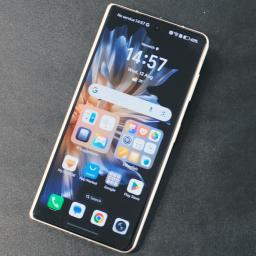 |
by Daniel Cooper on (#6ZMHX)
As soon as I picked up Honor's Magic V5, I was a little concerned about its durability. The fourth generation of Honor's Android foldable may not be massively thinner than its predecessor, but it sure feels like it. Yes, it's built with aerospace-grade materials to make it sturdy despite its svelteness, but it's also the first foldable I'd insist on buying a case for because goodness me, it's thin.If you recall, the last handset in this series was the Magic V3 and no, you haven't fallen asleep and missed a year. The number four can represent bad luck in Chinese culture as its Cantonese form (sei) sounds almost identical to the word for death (sei). Consequently, we've skipped a model number.The V5 is so svelte it'll barely make an impression on your pants pocket, measuring 8.8mm folded and 4.1mm open. That's not a big difference to the V3's 9.2mm / 4.35mm, but it certainly feels like a rubicon has been crossed. It's worth noting Honor is marking its own homework with one eye closed here, since it can only reach that thickness with the white V5. The other colorways (black, red and gold) stack up at 9mm / 4.2mm, which is almost the same as Samsung's Z Fold 7.Photo by Daniel Cooper for EngadgetNaturally, a premium foldable deserves premium internals, and the V5 packs a Snapdragon 8 Elite with 16GB RAM and 512GB storage. There's a 5,820mAh silicon carbon battery that, when paired with the company's usual AI power-management tools, promises nearly 50 hours of life on a charge. I won't comment on that claim but I can say this is the snappiest and fastest Honor foldable I've laid my eyes and hands on. There's no lag or delay when switching displays, and everything feels like it's already served up seconds before you've even asked for it.But in the same way no modern smartphone is a dramatic departure from what went before, the rest of the story here is nips and tucks. The Magic V5 has the same 6.43-inch cover display as the V3, and the main screen has grown only slightly, from 7.92 inches to 7.95 inches. The only useful tweak is support for Honor's MagicPen stylus on both screens, but it's the same size as an Apple Pencil, so you'll need to find a place to store it.Photo by Daniel Cooper for EngadgetIt's a similar story of modest changes on the imaging front as the V5 is equipped with a 50-megapixel f/1.6 primary camera with OIS. That's paired with a 64-megapixel, f/2.5 periscope telephoto (also with OIS) and a 50-megapixel f/2.0 ultra-wide. Overall, that's an improvement on the previous model, but both selfie cameras (in the cover and primary display) are the same 20-megapixel shooter found in the V3. Of course, performance is bolstered by the usual AI features that may or may not be useful.Honor has announced European pricing for the V5, with it costing 1,999 (around $2,317) in the EU and 1,699 (around $2,283) in the UK. That puts it in the same rough bracket as the Z Fold 7, although there's so many deals and discounts these days you can always save money if you look. I'm still not sure if Honor isn't selling itself short by not undercutting its rivals more aggressively, but it must feel it can compete, and win, against Samsung and the like on an even playing field.This article originally appeared on Engadget at https://www.engadget.com/mobile/smartphones/honors-magic-v5-foldable-almost-feels-too-thin-143022082.html?src=rss
|
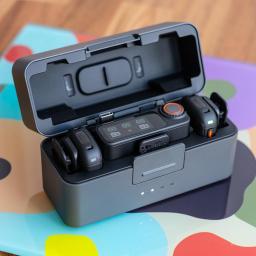 |
by Steve Dent on (#6ZMEQ)
DJI's busy engineering team is at it again with the creation of the company's third wireless mic system in less than two years. The new flagship DJI Mic 3 has a wholesale design change from the Mic 2 plus numerous improvements in areas like sound quality, noise reduction and the number of subjects you can record at once - though there is one downgrade compared to to the last model. I've had one for over a week so I'll provide some impressions as well. The most noticeable change with the Mic 3 is the smaller transmitter size and lighter weight. It weighs just 16 grams (.58 ounces) compared to 28 grams (.99 ounces) for the Mic 2, though it's bigger and heavier than the Mic Mini transmitter (10 grams). DJI has also improved the transmitter mounting options, introducing a rotating clip along with the magnetic option. There's even a choice of five colors for the windscreen to better match your subject's clothing. The smaller size and rotating clip makes the Mic 3 more discreet and easier to attach to any shirt or hat. However, there's still a large "DJI" logo on both sides of the transmitter that looks ugly but gives the company free advertising, I suppose. Steve Dent for Engadget The charging case holds a receiver and two transmitters and, unlike the last model, now lets you insert the transmitter with the magnetic mount and windscreen still attached. Fully charged transmitters can run for about eight hours and the receiver can go 10 hours. However, the case provides enough power to charge all three devices 2.4 times for about 28 hours of extended use. This feature makes the Mic 3 useful for marathon shoots and was key to the success of the original DJI Mic, though competitors like Sennheiser have caught on and introduced similar cases. The Mic 3 now supports up to four transmitters and eight receivers at once. That means you can record four subjects at a time to as many as eight receivers simultaneously for multi-camera shoots (if you purchase the extra kits, of course). I wasn't able to test this feature as I had just a single kit, but it'll be handy for large jobs if it works as advertised. To make syncing and lining up all that audio and video simpler, the Mic 3 now offers high-precision timecode capture embedded during internal recording. I tested this feature with two cameras, and once I figured out how to align the shots in DaVinci Resolve, it proved to be a valuable post-production timesaver. DJI The receiver can also be set to quadrophonic mode for select Sony cameras and software, allowing independent output of four channels at once to a single camera. DJI is promising a range of 400 meters (around 1,300 feet) and strong resistance to interference via automatic frequency hopping between the 2.4GHz and 5GHz bands. There are some major improvements in audio quality as well. It's DJI's first microphone with two adaptive gain control modes. For noisy outdoor environments like sporting events, Automatic mode suppresses sudden volume spikes to prevent clipping. Dynamic mode, meanwhile, adjusts gain on the fly in response to volume changes to ensure consistent loudness in quieter settings like studios. I tested this feature in Paris in a relatively quiet studio and outside with traffic and other city noises. The Automatic setting did a good job suppressing those unwanted sounds without a noticeable impact on audio quality. And the dynamic mode kept my speaking levels steady even when I trailed off at the end of sentences, again without impacting voice timbre or clarity. DJI The Mic 3 is also DJI's first with three tone presets (Regular, Rich and Bright) to handle different voice characteristics (medium, low and high pitches). This feature also worked as advertised. Set to "Regular," I needed less equalization than usual to even out my voice and it worked equally well on a higher-pitched female voice. Two-level active noise cancelation reduces background sounds like air conditioning and wind noise. Again, this worked effectively, though like any noise reduction algorithm, it impacted voice quality by artificially reducing some frequencies. Finally, the lossless audio feature lets the mic send uncompressed 48kHz 24-bit audio directly to the receiver to eliminate any MPEG audio artifacts. This is likely overkill for most use cases. While the Mic 3 offers good sound quality, it's nowhere close to a dedicated high-end studio microphone - so you'll be hard pressed to notice any difference. DJI also added internal dual-file 24-bit and 32-bit float recording, which records the highest quality possible without any clipping. That allows you to capture two files of 32-bit float sound without algorithmic changes, two channels of 24-bit sound with algorithmic changes or one of each. That's an improvement over the Mic 2, which only captured a single file of the original sound internally in 32-bit float. DJI There's one key feature missing on DJI's Mic 3 that might make it a non-starter for some audio pros. Unlike the Mic 2, the transmitter lacks a 3.5mm mic port for wired lav or other microphones. That means you're relying on the Mic 3's built in microphone, and although it offers high quality sound, may not be high enough for applications like broadcast. Finally, the Mic 3 works with DJI's OsmoAudio system, so it pairs with the Osmo 360, Osmo Action 5 Pro, Action 4 and Osmo Pocket without the need for a receiver. I tested it with the Osmo 360 and Action 5 Pro and it connected without any issues. For other devices, you can wire it in via a 3.5mm TRS port, TRRS monitoring and a USB-C port, or to smartphones via Bluetooth or USB-C using the included adapter. DJI's Mic 3 is now on sale in most territories, priced at $329 in a kit with a charging case plus two transmitters and a receiver, or $219 with a single transmitter and receiver. Update, August 28, 2025, 9:45AM ET: This story was updated with US sales links. DJI originally said the Mic 3 wasn't available in the US yet, but the company changed course and the new product can be purchased from DJI or Amazon.This article originally appeared on Engadget at https://www.engadget.com/audio/djis-much-smaller-mic-3-can-record-four-subjects-at-once-120032192.html?src=rss
|
 |
by Matt Tate on (#6Z6TF)
The back-to-school season is a good time to save on tech, whether you're returning to campus or not. While some discounts are reserved for students, others are available to everyone. One of the best right now is on Apple's M3-powered iPad Air, which is somewhat of a goldilocks tablet - one that will be a great option for just about everyone. You can grab it for $150 off at Amazon right now. This deal applies to each configuration of the 11-inch and 13-inch versions of the most recent iPad Air. So, the 11-inch model is as low as $449, while the 13-inch model is down to $649. The same deals can be found at Best Buy and Target if you prefer to shop somewhere other than Amazon. This is an all-time low price and beats the deal we saw on Prime Day by $30. The iPad Air M3 is more of an iterative refresh than a grand overhaul, but the spec bump means it'll last you a long time before the tablet's performance becomes a problem. This iPad occupies the position of "best for most" in our iPad buying guide, reinforcing that goldilocks analogy. The M3 chip is the main draw here, with Geekbench 6 scores proclaiming it around 16 percent more powerful than the M2 iPad Air, which is no slouch itself. Beyond the chip, it has a superior display and speakers to the entry-level model, and wider accessory support. You also get the option of a 13-inch display, which is great for artists or anyone who sees the iPad as a viable laptop replacement. If there's an obvious downside to the iPad Air M3, it's that it doesn't have the nice 120Hz OLED display of the iPad Pro. This is hardly surprising, as Apple often focuses on display tech to differentiate its Pro and non-Pro devices, but it's probably time the refresh rate on the middle-of-the-road iPad at least jumped up to ProMotion. Face ID is long overdue too. If you can live with these caveats, though, the iPad Air is an excellent option, particularly at this price. If you think the Air is too much for your needs, the iPad A16, Apple's entry-level tablet, is down to $299 right now. It was slightly cheaper during Prime Day in July, but this discount is still worth considering if you're looking to pick up a newer iPad for less. Check out our coverage of the best Apple deals for more discounts, and follow @EngadgetDeals on X for the latest tech deals and buying advice.This article originally appeared on Engadget at https://www.engadget.com/deals/apples-ipad-air-m3-gets-a-150-discount-for-labor-day-162908706.html?src=rss
|
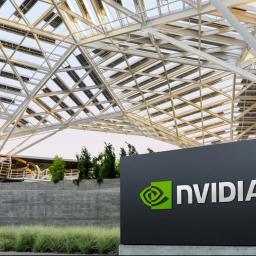 |
by Mariella Moon on (#6ZMHY)
NVIDIA has revealed that its revenue for the second quarter ending on July 27 rose 56 percent compared to the same period last year, and that's without shipping any H20 chips to China. It reported a revenue of $46.7 billion and a net income of $26.4 billion. As CNBChas noted, the company previously said that H20 shipments to China could have added $8 billion in sales to its second quarter figures. Instead, the company was only able to release $180 million worth of the chips to a customer outside of China. NVIDIA clearly still did very well in the second quarter, however, just like in the previous ones. This is the ninth straight quarter, ever since AI skyrocketed in popularity back in 2023, wherein the company's year-on-year revenue increase has exceeded 50 percent.The company designed the H20 specifically for the Chinese market, but the US government blocked its shipment earlier this year over concerns it could aid the nation's military. In mid-July, the government told NVIDIA that it will be able to ship the H20 to China again, but Chinese authorities discouraged local tech firms from using the chips. Now, the company is believed to be developing a new chip for China that's more advanced than the H20 and is based on the company's Blackwell architecture. Both the H20 and this upcoming more advanced chip could lead to another big leap in revenue and sales for the company.Speaking of Blackwell, NVIDIA has also announced that sales for its Blackwell-based chips rose 17 percent from the first quarter. The new product line, which is designed for advanced AI, reached $27 billion in sales and represented 50 percent of the company's data center revenue.This article originally appeared on Engadget at https://www.engadget.com/ai/nvidia-is-really-profiting-from-the-ai-boom-133044352.html?src=rss
|
 |
by Mariella Moon on (#6ZMEN)
Typepad, a blogging service that launched in the same year as WordPress, has announced that it's shutting down on September 30. "We have made the difficult decision to discontinue Typepad," its team said in a post. Several major publications used it as a backend for their websites in its early years, and it even released an app in 2008, but it soon fell behind WordPress in popularity. The service stopped accepting new signups sometime in 2020 but continued supporting its old customers. One user contacted Typepad back in March this year and was told that Typepad still supports its "existing customers and there are no plans for that to change," so shutting it down was a recent decision.After September 30, users will no longer be able to access their account management settings, their blogs and all associated content. Everything will be deactivated permanently. They will, however, be able to export their content before September 30 in Movable Type Import Format, which they can then upload to WordPress. Typepad will stop charging users for subscription starting on August 31, and if a user has recently made a payment, it "will attempt to issue a prorated refund to the payment method on file." There are probably only a few people still using Typepad these days, but let's pour one out for the old blogging service.This article originally appeared on Engadget at https://www.engadget.com/social-media/early-blogging-service-typepad-is-shutting-down-for-good-130033731.html?src=rss
|
 |
by Devindra Hardawar on (#6ZMEP)
Early this summer, my wife and I had an inconvenient realization: we may need to be in two places at once. An urgent doctor appointment could conflict with YMCA day camp pickup, or our kids would get invited to two birthday parties on the same morning at godforsaken activity centers in separate towns. There was no doubt we needed another car. A big ticket purchase seemed unjustifiable when we don't know what eggs will cost next month - and my search for an aftermarket Prius within my budget was strangely fruitless. As it turns out though, now might be the best time to grab a used EV.During my search, I saw BMW i3s (those freakish go-kart looking EVs) and VW e-Golfs selling for around $15,000, both of which are more fun to drive and have better tech features than older Prii. Couple those low prices with the soon-to-be-expired EV tax credit - which can get you up to $4,000 off certain used EVs and plug-in hybrids (PHEVS) - and some cars could cost $10,000 or less! Meanwhile, I couldn't find a decent 2015 Prius below $17,000.Long story short, I settled on a boring-yet-secretly-fun option: A 2018 Nissan Leaf. It has a range of 150 miles and a hatchback design that looks less funky than the original bug-eyed sub-compact. It accelerates quickly, it's relatively engaging to drive and it also has premium leather seats, radar-assisted cruise control and a decent Bose speaker system. Not bad for something close to $15,000 with only 33,000 miles!Even though it's worth far less than our stately Volvo XC90, I genuinely have more fun zipping around town in the Nissan Leaf. There's the magic of the instant torque you get from its electric motor, the convenience of one-pedal driving (Nissan calls it "e-pedal") and its cherry red paint lets me pretend I'm having a mid-life Miata crisis like my middle school rhetoric teacher. Plus it can easily fit a large toddler car seat and a booster for my six-year old, and it has enough trunk space to deal with massive grocery hauls. Thank god I didn't get a Prius.Devindra Hardawar for EngadgetWhy are used EVs so cheap?Many EVs just don't hold their value - you can blame the fast-evolving EV components and consumer uncertainty for that. But that also means you can find gently used models for far less than their list price. If I was less responsible and pushed my budget a bit higher, I'd absolutely consider a recent Hyundai Ioniq 5 for around $25,000. It's well-reviewed, and it looks like an '80s retro-future hatchback. What's not to love?(And yes, you could also look for used Teslas if you want. I can't vouch for the quality of that brand, and personally I wouldn't recommend getting stuck in its ecosystem.)You can find even deeper discounts for less popular cars, like the Polestar 2 (which would honestly look great in my driveway next to its Volvo cousin). That luxury EV started at $61,000 at launch - but now it's easy to find used Polestar 2s for around $25,000.No matter which used EV you're looking at, be sure to check out its battery health level. Most early EVs relied on air cooling for their batteries, and their chemistry isn't advanced as modern cars, which means degradation can be common. You can typically find a battery health indicator in a car's settings, but OBD sensors and apps like LeafSpy may provide a more accurate sense of their longevity.So long, EV tax creditThe Biden-era EV tax credit can also shave off up to $4,000 from select used EVs and $7,500 from new models, but unfortunately thanks to Trump's "Big Beautiful Bill" it's likely to be discontinued at the end of September. I've seen some dealers highlight cars eligible for tax credits, and that's also true for online stores like Carvana. Just be sure to check the IRS requirements - notably, the new vehicle credit only applies for individuals earning less than $150,000 and married couples filing jointly who earn less than $300,000.The used vehicle credit is even more restrictive, as it only applies to individuals earning less than $75,000 and married joint filers earning under $150,000. Additionally, qualifying EVs have to be priced under $25,000, and must be 2023 models or older. You'll also have to buy the used EV from a dealer - personal sales don't apply.How I learned to deal with range anxietyOne major reason older EVs have gotten cheaper is that they often offer relatively low driving ranges. The 2021 BMW i3 can run up to 153 miles, but older models topped out at 85 miles (there are also Range Extender models that use a small gas engine to slowly recharge the battery). My 2018 Leaf tops out at 150 miles, but there are also "Leaf Plus" models that can reach up to 226 miles.Those numbers are a long way off from the 300-miles or so we expect from new EVs and gas cars, but I'd also argue the shorter range isn't a huge deal for many people. US DOT data tells us that 95 percent of trips in personal vehicles cover less than 31 miles, and the average driver travels 37 miles per day. That makes low-range EVs ideal as secondary vehicles for local driving.Between day-care pickup, grabbing groceries and other local errands, I rarely drive more than 20 miles a day in my Leaf. That typically eats up only 10 to 15 percent of charge per day, depending on how much I need to blast the AC to deal with Georgia summers.Now I won't deny that you wouldn't want to go road tripping with a low-range EV, especially with America's messy charging infrastructure. Low-range EVs aren't for everyone. But if that's your worry, I'd just recommend avoiding the cheap sub-$15,000 used EVs. You'll find plenty of models with bigger batteries near $25,000.Devindra Hardawar for EngadgetCharging might be easier than you thinkIf you can string a 25 foot power cord outside, you can easily Level 1 trickle charge an EV. And for moderate drivers, that may be all they need to keep their car juiced up. If I plug in my Nissan Leaf at 5PM, it can typically charge up by 40 percent by 8AM, thanks to its small battery. For larger EVs like the Kia EV9, I can usually get 10 to 15 percent of a charge overnight.Of course, things become more complicated if you're in your car all day and need faster charging, or if extreme weather causes your battery to drain faster than usual. At that point, you'll either have to seek out a public charging point, or get a Level 2 charger installed at home. Neither option is especially difficult, but they're more annoying than simply going to a gas station for a few minutes. I wouldn't be surprised if that's the big stumbling block pushing mainstream shoppers away from EVs.From what I've seen, though, many people are just hesitant to break their existing habits. If you have the ability to install a Level 2 charger in your garage, it's not especially difficult or expensive (though running an extra power line could be a big spend). And EV chargers are also popping up like weeds in shopping centers, so it may not be that tough to park up and charge while running errands.In my case, I'm perfectly fine running a Level 1 charger to an outlet near my front door. That does mean I'll occasionally have a thick electrical cord draped across my front porch (something I'm sure my wife just loves), but I can live with it for now. I do plan to get a Level 2 charger installed eventually though - it'll make testing EVs a lot easier, and I can prepare myself for a more spacious family EV to replace our gas guzzling SUV.This article originally appeared on Engadget at https://www.engadget.com/transportation/evs/its-the-perfect-time-to-buy-a-cheap-used-ev-123015687.html?src=rss
|
by Valentina Palladino on (#6A8K3)
If your Wi-Fi signal is struggling to reach every corner of your home, a signal booster - also known as a Wi-Fi extender - might be the fix you need. Whether you're dealing with annoying dead zones, buffering video calls or laggy gaming sessions, the right Wi-Fi extender can help expand coverage and improve connectivity without forcing you to move your router.
 |
by Ian Carlos Campbell on (#6ZM2Z)
Samsung is hosting another Unpacked event on September 4, and this time it'll only be available to watch virtually. The event will stream on Samsung's YouTube page and website at 5:30AM ET, following the in-person launch events the company held for the Galaxy S25 line in January and the new Galaxy Z Fold 7 and Z Flip 7 in July.With most of the company's smartphone lineup accounted for, Samsung will likely use this Unpacked to introduce new tablets. The company announced the the Galaxy Tab S10 Lite earlier this week and now leaks point to a new Galaxy Tab S11 and S11 Ultra being in the works, according to Notebookcheck. The Tab S11 will reportedly feature an AMOLED screen, 12GB of RAM and a MediaTek Dimensity 9400 chip, rather than Samsung's preferred Qualcomm Snapdragon chips. The Tab S11 Ultra will have similar features, but with a larger AMOLED, up to 16GB of RAM, the same MediaTek chip and a larger 11,600mAh battery.Odds are also good that Samsung will announce the Galaxy S25 FE, a cheaper alternative to the normal Galaxy S25. Based on the leaks SamMobile compiled, the S25 FE will share many similarities with the S24 FE, save for an improved 12MP selfie camera, up from 10MP on the S24 FE, a larger 4,900mAh battery and faster wired charging speeds.Provided you're willing to get up early, you'll be able to see for yourself when Samsung streams its next Unpacked event on September 4. It likely won't be the last event the company holds this year, either. The Project Moohan Android XR headset and Samsung's first trifold phone are also expected to be released in 2025.This article originally appeared on Engadget at https://www.engadget.com/mobile/smartphones/samsung-will-hold-another-unpacked-on-september-4-230040711.html?src=rss
|
 |
by Anna Washenko on (#6ZM30)
Most of the time, AI companies are locked in a race to the top, treating each other as rivals and competitors. Today, OpenAI and Anthropic revealed that they agreed to evaluate the alignment of each other's publicly available systems and shared the results of their analyses. The full reports get pretty technical, but are worth a read for anyone who's following the nuts and bolts of AI development. A broad summary showed some flaws with each company's offerings, as well as revealing pointers for how to improve future safety tests.Anthropic said it evaluated OpenAI models for "sycophancy, whistleblowing, self-preservation, and supporting human misuse, as well as capabilities related to undermining AI safety evaluations and oversight." Its review found that o3 and o4-mini models from OpenAI fell in line with results for its own models, but raised concerns about possible misuse with the GPT-4o and GPT-4.1 general-purpose models. The company also said sycophancy was an issue to some degree with all tested models except for o3.Anthropic's tests did not include OpenAI's most recent release. GPT-5 has a feature called Safe Completions, which is meant to protect users and the public against potentially dangerous queries. OpenAI recently faced its first wrongful death lawsuit after a tragic case where a teenager discussed attempts and plans for suicide with ChatGPT for months before taking his own life.On the flip side, OpenAI ran tests on Anthropic models for instruction hierarchy, jailbreaking, hallucinations and scheming. The Claude models generally performed well in instruction hierarchy tests, and had a high refusal rate in hallucination tests, meaning they were less likely to offer answers in cases where uncertainty meant their responses could be wrong.The move for these companies to conduct a joint assessment is intriguing, particularly since OpenAI allegedly violated Anthropic's terms of service by having programmers use Claude in the process of building new GPT models, which led to Anthropic barring OpenAI's access to its tools earlier this month. But safety with AI tools has become a bigger issue as more critics and legal experts seek guidelines to protect users, particularly minors.This article originally appeared on Engadget at https://www.engadget.com/ai/openai-and-anthropic-conducted-safety-evaluations-of-each-others-ai-systems-223637433.html?src=rss
|
 |
by Anna Washenko on (#6ZM0F)
Crystal Dynamics, the studio behind the recent Tomb Raider games, announced an unspecified number of layoffs today. In a post on LinkedIn, the game developer kept the size of the cuts vague, only stating that "a number of our talented colleagues" would be impacted. In what's becoming an all-too-familiar refrain, the company cited "evolving business conditions" as the reason for the layoffs."This decision was not made lightly," the post reads. "It was necessary, however, to ensure the long-term health of our studio and core creative priorities in a continually shifting market."Crystal Dynamics was acquired by Embracer Group in a 2022 buying spree by the Swedish game company. Embracer still owns the studio, but was forced to do some layoffs of its own in 2023 followed by a restructuring last year. Crystal Dynamics is still working on a new Tomb Raider game, which the company said will not be affected by the layoffs. However, the studio had been tapped to help The Initiative with its Perfect Dark reboot. That project was canceled and The Initiative shut down in a separate wave of massive cuts at Microsoft earlier this year. It's unclear whether that cancelation was a reason for today's cuts.This article originally appeared on Engadget at https://www.engadget.com/gaming/crystal-dynamics-announces-layoffs-but-says-tomb-raider-will-not-be-impacted-205948298.html?src=rss
|
 |
by Ian Carlos Campbell on (#6ZM0G)
Copilot, Microsoft's AI assistant that's integrated into Windows and Microsoft 365, is making the jump to your living room. The company has announced that select Samsung TVs will now be able to access Copilot to ask questions and receive recommendations via voice chat, with the AI assistant represented on your screen as a talking blob.Based on Microsoft's examples, Copilot can recap shows, offer movie suggestions and answer general knowledge questions. It can also go beyond voiced responses (which are apparently synced to the blob's animated mouth movements) and include visual aids, like a card with a movie summary and a Rotten Tomatoes score. You don't need to have a Microsoft account to use Copilot on your TV, but Microsoft says it offers additional personalizations and the ability for the AI to reference past chats if you do.Copilot's blob-ified appearance is part of a bigger redesign Microsoft introduced in 2024 that made the chatbot interface more personalized and user-friendly. Besides being a productivity tool, Microsoft is interested in positioning Copilot as a "companion" with a visual representation that you can customize. The larger customization part isn't available yet, but putting Copilot in a casual setting like your living room fits with that overall goal. Copilot integration was also announced as being a part of LG's 2025 TV lineup. On new Samsung TVs, Copilot joins a collection of Samsung-developed AI features for automatically translating subtitles and identifying on-screen people and products.Copilot is available in select markets on the 2025 versions of Samsung's "Micro RGB, Neo QLED, OLED, The Frame Pro, The Frame, as well as the M7, M8 and M9 Smart Monitors," Microsoft says. You can launch Copilot by clicking on its icon in the Apps Tab or using a voice command. Once the app is loaded, you can talk to the assistant by pressing the mic button on your Samsung remote.This article originally appeared on Engadget at https://www.engadget.com/ai/microsoft-copilot-is-now-a-talking-blob-on-samsung-tvs-204115199.html?src=rss
|
 |
by Anna Washenko on (#6ZM0H)
Remember Judas? No, not the biblical figure and not the Lady Gaga bop, this Judas is a project from Ghost Story Games. If you don't remember, it's the game that was reportedly in "development hell" before it was even announced. The team, led by BioShock creator Ken Levine, had gone pretty quiet for a few years after releasing the debut trailer, but today teased a look at some key art and mechanics for the game.The BioShock lineage is clear from the handful of visuals we've seen so far, but instead of a linear binary of which NPCs and actions are good versus bad, Judas aims to place the moral compass more firmly in the player's hands. There are a trio of major characters, dubbed the Big 3 in today's devlog, who will be drawn to the player based on what you do in-game. If one of the main NPCs gets ignored for too long, they'll become the game's villain. This unlocks new sets of powers and abilities for them that could also influence your gameplay options.For instance, there are Rent-A-Deputy stations where the player can temporarily access a weirdly wiggly ally to help them in fights. However, if you've alienated Tom, the old-school sheriff character, Rent-A-Deputies will attack you instead.The emphasis here seems to be on building relationships with the Big 3, and the gist seems to be that at some point, you'll have to decide which one will be your real enemy. Unsurprisingly, the team has no release date to share yet. Maybe in another couple of years...This article originally appeared on Engadget at https://www.engadget.com/gaming/bioshock-creator-ken-levines-judas-game-still-exists-now-has-key-art-201635885.html?src=rss
|
 |
by Will Shanklin on (#6ZKY2)
It's now a little cheaper to try Xbox Cloud Gaming. Previously restricted to the Game Pass Ultimate tier, it's now open to Core and Standard subscribers. Xbox Cloud Gaming is still in beta, so you'll need to sign up (for free) as an Xbox Insider.Game Pass Core and Standard subscribers can stream cloud-playable games from two categories. This includes games supported in their subscription or select cloud-enabled games they own. The biggest perk of Cloud Gaming is it's supported on a whole mess of devices. In addition to Xbox consoles and PCs, it's also available on mobile, smart TVs, Amazon Fire TV devices, Meta Quest headsets and anything else with a web browser.MicrosoftThe move is the latest evidence of Microsoft's shift to a more device-agnostic gaming strategy. It's now more about selling Game Pass subscriptions than fighting a losing hardware battle with Sony. And Microsoft views cloud gaming as playing a pivotal role in that trajectory. In the past year, it rolled out the ability to stream Xbox games you already own. In July, it expanded that to include PC games and made your recently played games follow you across devices.The company also sees an opportunity in handheld consoles, with its partnership with ASUS. The ROG Xbox Ally and Ally X are set to arrive on October 16, although their pricing remains unknown.This article originally appeared on Engadget at https://www.engadget.com/gaming/xbox/xbox-cloud-gaming-is-now-playable-in-the-cheaper-game-pass-tiers-183033789.html?src=rss
|
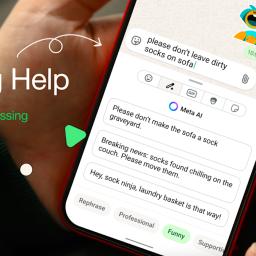 |
by Lawrence Bonk on (#6ZKY3)
WhatsApp just introduced an AI-powered writing assistant, in case you need help with a text or whatever. The AI provides suggestions in various styles, like professional, funny or supportive. Once generated, the user can continue editing the message if required.All you have to do is look for the new pencil icon in a 1:1 conversation or a group chat. The AI will handle the rest. It's rolling out now, but only in English and to users in the US. The company says it hopes "to bring it to other languages and countries later this year."The obvious question here is regarding privacy. WhatsApp messages are end-to-end encrypted, but AI queries are typically sent to a cloud data center somewhere. Luckily, the company has built this feature on top of Meta's pre-existing Private Processing technology.This allows users to use Meta AI without anyone else ever reading the message or any suggested re-writes. This works similarly to Apple's Private Cloud Compute, which also integrates with AI without sending all data to the cloud. Meta says the tech preserves "WhatsApp's core privacy promise, ensuring no one except you and the people you're talking to can access or share your personal messages."With the privacy angle out of the way, that leaves the feature itself. Just about every platform out there has some kind of AI writing assistant at this point, so we aren't sure what makes this one special. Also, is there even a benefit to using this type of thing in the context of a quick back-and-forth text conversation? I see the use for long-form writing projects but not so much here, but maybe that's just me.This article originally appeared on Engadget at https://www.engadget.com/ai/whatsapp-is-the-latest-to-offer-an-ai-powered-writing-assistant-182116369.html?src=rss
|
 |
by Matt Tate on (#6ZKTW)
Anthropic's agentic AI, Claude, has been "weaponized" in high-level cyberattacks, according to a new report published by the company. It claims to have successfully disrupted a cybercriminal whose "vibe hacking" extortion scheme targeted at least 17 organizations, including some related to healthcare, emergency services and government.Anthropic says the hacker attempted to extort some victims into paying six-figure ransoms to prevent their personal data from being made public, with an "unprecedented" reliance on AI assistance. The report claims that Claude Code, Anthropic's agentic coding tool, was used to "automate reconnaissance, harvest victims' credentials, and penetrate networks." The AI was also used to make strategic decisions, advise on which data to target and even generate "visually alarming" ransom notes.As well as sharing information about the attack with relevant authorities, Anthropic says it banned the accounts in question after discovering criminal activity, and has since developed an automated screening tool. It has also introduced a faster and more efficient detection method for similar future cases, but doesn't specify how that works.The report (which you can read in full here) also details Claude's involvement in a fraudulent employment scheme in North Korea and the development of AI-generated ransomware. The common theme of the three cases, according to Anthropic, is that the highly reactive and self-learning nature of AI means cybercriminals now use it for operational reasons, as well as just advice. AI can also perform a role that would once have required a team of individuals, with technical skill no longer being the barrier it once was.Claude isn't the only AI that has been used for nefarious means. Last year, OpenAI said that its generative AI tools were being used by cybercriminal groups with ties to China and North Korea, with hackers using GAI for code debugging, researching potential targets and drafting phishing emails. OpenAI, whose architecture Microsoft uses to power its own Copilot AI, said it had blocked the groups' access to its systems.This article originally appeared on Engadget at https://www.engadget.com/ai/anthropic-admits-its-ai-is-being-used-to-conduct-cybercrime-170735451.html?src=rss
|
 |
by Mat Smith on (#6ZKTX)
Google marked the tenth generation of Pixels with four new smartphones. While the pro' and foldable Pixel 10 models might have no-compromise specs (and prices to match), Google has blurred the lines between its entry-level Pixel 10 and those premium devices. This year, the base Pixel 10 has a bigger battery, a new 5x zoom telephoto camera and almost as many AI features as the flagship Pixel 10 Pro and Pixel 10 Pro Fold. If the celebrity-loaded Made By Google event was anything to go by, the company is putting a lot more effort (and money) into making the Pixel a genuine threat to the Galaxy S series and iPhones, and conveying that message to everyone. The Pixel 10 deserves those comparisons, and in a lot of ways, it's the better smartphone. Hardware and display Google's 10th-generation of Pixels look a lot like their predecessors. There's a protruding pill-shaped camera unit, which is the central design flourish. It's substantial, which still looks a little jarring, but it also doubles as a sort of grip for my index finger while holding the phone, something I noticed after a year of using the Pixel 9 Pro. Google has also refreshed the color range of its Pixel family. Both a vivid blue (Indigo) and mild yellow (Lemongrass) shades are welcome additions to the typical black and white hues. The 6.3-inch screen's refresh rate still tops out at 120Hz, but that's now pretty much standard across midrange devices and up. Even the entry-level Pixel 9a has the same smooth scrolling experience. However, Google has boosted the Pixel 10's brightness, now peaking at 3,000 nits, which is a slight increase from 2,700 nits on the Pixel 9. The screen maxes out at 2,000 nits at its brightest setting for HDR, which is also a bump up from the Pixel 9. Google has also boosted the sound quality on the Pixel 10 to be noticeably less tinny and a little bassier than previous Pixels. Another addition is Pixelsnap, which is essentially MagSafe for Pixels. The wireless charging integration is largely the same, with magnets that firmly attach the device to charging pucks, accessories and docks. It easily worked with a range of wireless chargers, although Qi2-supported options are still rarer than they should be. You're more likely to find a MagSafe-branded wireless charger from third-party companies like Belkin, but those don't achieve the faster charge speeds of Qi2. If you're feeling spendy, Google's official Pixelsnap charger is $40 (or $70 with a stand) and reaches speeds up to 25W, while there's a PopSocket-like Pixel ring stand that can snap to the back of the phone. Note that the Pixel 10 can only wirelessly charge up to 15W, though. Additionally, the Pixel 10 series supports most of the MagSafe peripherals that iPhone users have been enjoying since 2020. Camera The big hardware upgrade this year is the cameras. The photo unit includes a 48-megapixel wide-angle setup, a 13MP sensor with an ultra-wide lens and a 10.8MP 5x telephoto camera. For a base phone, it's an impressive combo, even though it doesn't quite match the higher-res sensors found in the Pixel 10 Pro - or last year's Pixel 9 Pro. That new telephoto lens isn't some middling 2x or 3x zoom, but a 5x zoom which puts it beyond rivals at a similar price point, like the Galaxy S25 (3x zoom). The iPhone 16 doesn't even have a telephoto lens and makes do with an "optical-quality" digital zoom. It's like using a Pixel Pro, with an additional cropped zoom up to 10x and a (less consistent) Super Res Zoom up to 20x. This is a significant step up for the base model and something I'm sure we'll see the aforementioned rivals likely try to match. Simply put, the Pixel 10 is just a better, more versatile camera phone than, say, the Galaxy S25. I tested the Pixel 10's telephoto against the 9 Pro's, and there were noticeable differences in detail and crispness, which is understandable as the latter has a much higher-res 48MP sensor. However, that doesn't detract from the leap in both detail and shooting range compared to the base Pixel 9 from last year. The Pixel 10 can also capture 10-bit HDR video now, although it doesn't offer the Pixel 10 Pro's 8K video, Night Sight Video and Super Res Zoom Video options. There's no Video Boost, either, which uploads footage to Google's cloud to enhance online. There are plenty of other notable camera features onboard, including Night Sight low-light shooting, or Add Me, which is still the standout Pixel camera feature from last year and hasn't been replicated by rivals yet. For those who missed my praise last year, Add Me stitches together two group photos, taken by two different people. The mode guides users to line up the shots, meaning your group photos can finally include the person who takes all of them (me). Camera Coach is an intriguing addition to the Pixel camera experience. Above the viewfinder, there's a new camera icon with a plus sign in the top right corner. Tapping it makes the screen flash, and the coach will offer multiple framing and photo-taking suggestions. It'll also add a Get Inspired option that goes a bit more avant-garde, generating thumbnails of possible results based off of the sample it took, filling the gaps with generative AI. I witheringly launched the Coach, ready to criticize its basic suggestions or common-sense ideas. But, you know what, it's not bad. With hooks in Gemini AI, the mode will offer angle, lighting and composition suggestions. You can also choose whether to emphasize, say, the pattern of some leaves, or the background behind it or the group of people to the side. While the feature utilizes Google's Tensor G5 chip to analyze shots, it does require an internet connection. Software Thanks to the Tensor G5 chip, the Pixel 10 can run Google's newest Gemini Nano model on-device. This means generative AI experiences can now be used without the need for connectivity. However, as I mentioned with Camera Coach, that isn't always the case. However, Magic Cue does work without having to summon its answers from the cloud. And when it works, it's what I've wanted from AI assistants for years. After gaining your permission, Gemini gets into your screenshots, calendar, Gmail accounts and more. Magic Cue will pull in the information you need, hopefully, where you need it. For example, it displays the email address for that comedy show venue your friend wants tickets for, or nudges your calendar to show availability when a friend asks what your weekend plans are. These cues are highlighted with a rainbow aura" that has become the de facto visual shorthand for artificial intelligence. This is just the start: Google will eventually add the ability for Magic Cue to tap into your photos, suggesting images when someone's mentioned in text messages, emails and more. Magic Cue has some blind spots, though. As my colleague Sam Rutherford noted in his Pixel 10 Pro review, I found it particularly fussy with calendar cues, often failing to identify dates or times in screenshots or emails. It's also missing a major area of where I want all of this info: third-party messaging apps. But hey, if you're using Google Messages, you're good to go. Google's almost-instantaneous voice translation during calls is impressive too. Managing Editor Cherlynn Low laid out how that works, and while it's a technical marvel, I'm not sure how much I'd use the feature for high-stakes conversations like booking accommodations or sorting out travel issues. I also liked Take a Message, which transcribes calls when you're unable to answer. However, just like I did while I was testing Apple's similar feature during my iOS 26 preview, I either answered calls instinctively [Ed. note: Mat is clearly a different specimen from the rest of us humans] or people didn't leave voicemails. There are plenty of minor upgrades to existing tools and features on the Pixel 10. Gemini Live, which can see" through your camera or read what's on screen, can also now offer visual guidance, highlighting objects onscreen after hearing your request or question. NotebookLM now integrates with Pixel Screenshots and Recorder. If the former detects something that could be useful to an existing NotebookLM project, it'll suggest adding it for easier access. There are also Writing Tools (sound familiar?) within Gboard, which can retool your existing prose into specified writing styles. It'll even suggest which emojis to add into the mix. For now, this is only compatible with US English, so it's not my favourite favorite. There's also a new Pixel Journal app, which sounds pretty familiar too. I briefly tested it out during the days I've had the phone, but if you haven't found the app/notebook/diary to journal in yet, it's a perfectly fine option, with AI-powered suggestions on what to write about and the ability to attach photos and other details that your smartphone can log. Something that wasn't apparent during my review was that the Journal app will learn about your writing patterns and offer up insights on how often you write, when you typically write and more. Performance and battery life Google says its new Tensor G5 chip is 34 percent faster than last year's G4, while the TPU (Tensor Processing Unit, ugh) is 60 percent faster at AI tasks. Performance testing apps like Geekbench 6 can't be installed on Pixel devices before the phones go on sale, so I wasn't able to quantify the upgrade. I can feel those improvements with heavier processing tasks though, like transcription, translation and image generation, in apps like Pixel Studio. The Pixel 10 also had no issues running graphically intensive games like Infinity Nikki and Zenless Zone Zero, and seemed quicker to load most apps compared to Pixel phones of the past. Google's Tensor chips are definitely catching up. Anecdotally, I find myself using Google's Pixel AI features (and Gemini) significantly more often than on other Android devices I've used and tested. With comparable AI tasks, such as transcribing an interview, the Tensor G5 appears to handle them more efficiently, delivering results in less time. The Pixel 10 has a 4,970mAh battery, which is not only bigger than the Pixel 9 (4,700mAh) but also the Pixel 10 Pro (4,870mAh). However, the Pixel 10 doesn't quite match the 27 hours-plus rundown time of the Pixel 9. Running a looping video, this year's phone lasted around 22 hours, which is a bit disappointing given the specs. I'll retest and update this review if the results differ. The Pixel 10 supports wired charging up to 30W, returning to over 50 percent in under 30 minutes. It can also be wirelessly charged at up to 15W, thanks to Qi2 support. That's an improvement, but it's not Qi2.2 like the Pixel 10 Pro XL, which can reach 25W charging wirelessly. Wrap-up The Pixel 10 redefines what we should expect from base flagship smartphones. With Apple's next iPhone just around the corner, Google has added a 5x telephoto camera, rounding out the Pixel's photography chops offering while augmenting it with more features powered by Gemini. Camera Coach might not be for everyone, but Magic Cue - like Pixel Screenshots last year - is a glimpse into the future of how we'll use AI on smartphones. The Pixel 10 is a substantial upgrade from the Pixel 9, although given it has the Tensor G5 chip, it's a shame that software features like Zoom Enhance from last year's Pixels didn't make the cut. Unless you're a die-hard smartphone gamer, there isn't a more capable smartphone at this price.This article originally appeared on Engadget at https://www.engadget.com/mobile/smartphones/google-pixel-10-review-170041718.html?src=rss
|
 |
by Sam Rutherford on (#6ZKTY)
In the 90s, the term smartphone" emerged to denote devices with advanced computing" features that allowed you to do more than just make calls. But if we're being honest, applying that label to pocket-sized gadgets that ran cut-down versions of desktop PC apps with half-baked UIs was kind of overselling it. More recently though, we've seen handsets like those from Google come with sophisticated features that simply aren't available anywhere else, due in no small part to the rise of AI. And now with the arrival of the Pixel 10 Pro and Pixel 10 Pro XL, these devices feel like they are redefining the smart" in smartphone as we know it. Design and display: Bringing the polish The overall look and feel of the Pixel 10 Pro and Pro XL haven't changed much since last year. You still get polished aluminum sides sandwiched by slabs of Gorilla Glass Victus 2 and an IP68 rating for dust and water resistance. The main differences are a slightly updated lineup of colors (moonstone, jade, porcelain and obsidian) and a switch from a matte to shiny finish on the back. This is a small bummer for me as I prefer the soft-touch feel of its predecessors. The pale gold frame on the jade model is a nice touch, even if I would have preferred a richer shade of green. The Pixel 10 Pro and Pro XL's 120Hz OLED screens have gotten a touch brighter, now topping out at 3,300 nits (up from 3,000). This makes them a bit easier to see outside in direct sunlight while retaining the gorgeous vivid colors we've enjoyed on Google's phones since switching to its Super Actua-branded displays. And with the screens themselves coming in at 6.3- and 6.8-inches, there's no deviation in sizing either. Sam Rutherford for Engadget My one small gripe is that at least in the US, the Pixel 10 family is now eSIM-only. As someone who prefers the convenience of being able to swap mobile networks at a moment's notice, I really wish Google hadn't. But ever since Apple made a similar switch back on the iPhone 14, this was bound to happen at some point. Like microSD card expandability and 3.5mm audio, physical sims have become another endangered feature on the brink of extinction. Performance: The Tensor G5 is faster but not quite peak With Google's focus on AI performance, the everyday speed of its phones has always lagged a touch behind other Android flagships. However, thanks to the Tensor G5, the Pixel 10 line has closed that gap considerably due to CPUs that are more than 30 percent faster than before. Even without the ability to run some of our traditional tests like Geekbench 6 (which on Pixels often can't be installed prior to a device's official on-sale date), I noticed significantly shorter loading times in some of my favorite games. Sam Rutherford for Engadget Booting up Sword of Convallaria only took 14 seconds, which is just one second longer than what I got recently from the Samsung Galaxy Z Fold 7 and its Snapdragon 8 Elite for Galaxy chip. I recently clocked the Pixel 9 Pro Fold and its Tensor G4 processor taking 18 seconds to do the same task, so that's a very encouraging improvement. And holding everything together is Google's Material 3 Expressive UI for Android 16, which makes the whole OS feel snappier and more alive. Software: This is where the magic happens The most tantalizing new feature on the Pixel 10 family is Magic Cue, because when it works, it really does feel like magic. If you allow it, it will look through your screenshots, calendar events, contacts, Gmail and Messages. So when someone texts you Where are we getting dinner on Thursday?" that info appears in its own little animated rainbow bubble, exactly where you need it, instead of you needing to flip back and forth between multiple apps. It's like your phone is actually looking out for you and wants to simplify things by cutting out tedious steps. Plus, all of this happens on device, so there's no need to send your data into the wild wild web. You can see that Magic Cue can't answer every question and doesn't work for events more than 10 days out, but when it does you'll see little rainbow buttons pop up with pertinent info or links to helpful apps. Sam Rutherford for Engadget In addition to reservations, if someone asks if you're free, Magic Cue will pull up a shortcut to your calendar to make sure there aren't any conflicts. It can also retrieve flight info (or call the airline directly), phone numbers and more. And sometime later in September, Google is adding the ability for Magic Cue to send photos of a specific person or pet when they come up in conversation. On the flipside, for all the times when Magic Cue feels like wizardry, there are just as many limitations. For example, if an event hasn't been entered into your calendar (like a work event planned in Slack) , Google's AI may not be able to find it. Magic Cue also doesn't work on appointments that are more than 10 days away. And perhaps my biggest issue is that even within Google's own first-party software, Magic Cue isn't supported in Google Chat, not to mention the vast sea of third-party messaging apps like Discord, Line, etc. That's a problem because those services have largely replaced texting for me. Now I'm sure Google will expand Magic Cue support to more apps in the future, but this is how it works right now. Sam Rutherford for Engadget It's a similar situation for another new feature: natural sounding on-the-fly voice translation in calls. I rarely answer calls in general nowadays, let alone calls in a language I can't speak. But when this works, it's damn impressive and my relatives said the AI-generated voice sounded a bit like me (though the lack of support for Chinese seems like a strange omission). Same goes for Take a Message, which can create real-time transcripts (similar to Live Voicemail on iPhone) when you miss a call that you might have otherwise wanted to answer. To me, it's a more modern take on voicemail, the difference being that Google will send the transcript to you as a text message as well. But once again, how often do people do that? For me, it's become increasingly rare, but your mileage may vary. That said, I do like the new Daily Hub as a way to make the far left panel on the Pixel 10 Pro's homescreen more useful. It puts upcoming events, the forecast and interesting videos and articles (tailored to me, of course) all in one place, but I wish the box for it was a bit larger. On the flipside, I'm still kind of out on the Pixel Journal app. I've never been a big Dear Diary person and I'm not sure a digital version will get me to pick up the habit. But I do appreciate that it tries to surface things like the coolest photos you took on a certain day while encouraging you to be more introspective, or prompting you to keep track of things like fitness goals. Plus, you can lock it behind a PIN or biometrics to keep prying eyes away from your inner thoughts. Cameras: Enhance mode activated Sam Rutherford for Engadget While the physical hardware behind the Pixel 10 Pro's 50MP main, 48MP ultrawide and 48MP telephoto cameras hasn't changed much, its photo skills got a bump thanks to improved software. Now with support for full resolution portrait shots, the Pixel 10 Pros can capture a new level of detail which is generally great, unless you're like me and you instantly cringe when you can see every single pore on your face. That said, all those pixels put more strain on processing power. I noticed that anytime I shot more than three max-res pics in a row, the phone has to pause while it cleared out its buffer before letting me snap any more. That isn't great if you're trying to capture candid reactions. If you're looking for guidance, Camera Coach does a surprisingly good job providing step-by-step instructions on how to improve your pics. Or, if you need inspiration, it can also suggest some more outside-the-box compositions. The downside to all this is that it does ask more of the user. Instead of just opening the camera app when you want to snap a quick pic, you need to carve out time to see how far Camera Coach's AI-powered advice can really take you. This may result in more trial and error than some folks will really want to deal with. But considering this is a very optional learning tool, that last part isn't a big deal. This brings us to the new natural language editing powers in Google Photos. Instead of needing to fool around with sliders or figure out how to use an app like Lightroom or Photoshop, you can simply tell the Pixel 10 what changes to make and it will do it. This might be the most powerful new tool on the entire phone, because instead of needing to know about things like levels, curves or exposure, I was able to simply ask the Pixel 10 Pro to brighten my photo and voila, suddenly (well, after a few seconds of waiting) I had a low-light picture that was easier to see. As a fan of telephoto photography, my favorite new camera feature is easily Pro Res Zoom. By taking the 5x optical lens and combining it with the power of on-device generative AI, the Pixel 10 Pro line can shoot at up to 100x. Sure, it's not perfect and the results aren't as good as real glass, but that's not really an option for phones. And when I compared what Pro Res Zoom captured at 100x compared to what a Samsung Galaxy S25 Ultra produced at the same magnification, the Pixel 10 Pro XL's shot was sharper, more detailed and just better looking in almost every way. However, there are some limitations on Pro Res Zoom when taking long range shots of people that may cause you to fall back on 20x Super Res Zoom in certain situations. Sam Rutherford for Engadget Still, all this feels weird because I remember a time when scenes from CSI where people yelling Enhance" at a computer in order to create magically crystal clear zoom images from extreme digital crops felt like a meme. But now, that's not very far off from what the latest round of Google's AI-powered enhancements have given us. When it comes to standard daytime and low-light shots, Google's image processing remains unmatched. Nighttime pics are brighter and more accurate while the Pixel 10 Pro XL more capably preserved things like highlights in my photo of some garden-raised tomatoes. Battery life and charging The Pixel 10 Pro and Pro XL feature 4,870mAh and 5,200mAh batteries respectively, which are up from the 4,700mAh and 5,060mAh cells on last year's phones. This translated into runtimes of 27 hours and 24 minutes for the 10 Pro and 28:01 for the 10 Pro XL - both healthy increases from the 25 hours of life we saw previously from the Pixel 9 Pro. And in the real world, Google's latest handsets felt even more efficient than that, often ending the day with upwards of 35 percent juice left in the tank. Sam Rutherford for Engadget As for charging, wired speeds for both phones have gotten a small boost with the 10 Pro now topping out at 30 watts (up from 27W) or 40 watts (up from 37W) for the 10 Pro XL. However, the biggest upgrade when it comes to charging convenience is the addition of official magnetic Qi2 wireless support, or what Google is calling Pixelsnap. This means the entire Pixel 10 line now works with a huge range of accessories (including most MagSafe peripherals for the iPhone) that makes it easy to slap a wireless puck on the back without having to worry about if it's properly aligned or not. Furthermore, while wireless charging speeds for the 10 Pro are staying the same at 15 watts, the 10 Pro XL can now go up to 25 watts. Unfortunately, there still aren't that many compatible accessories that support charging at that speed. But between Google's new family of Pixelsnap peripherals and increased adoption for Qi2 as a whole, that won't be the case for long. So if you care about getting the Pixel with the fastest charging speeds, the 10 Pro XL is what you want. Thanks to the addition of Pixelsnap magnetic charging, Pixel 10 Pro and Pixel 10 Pro XL are now compatible with the vast majority of Qi2 wireless charging accessories including this previously available battery pack from Anker. Sam Rutherford for Engadget The one small downgrade for 2025 is that the Pixel 10 family no longer supports reverse wireless powersharing (aka Battery Share), which is a feature that has been available on several previous generations of Google phones. I will fully admit that this feature was never something I used everyday. But every now and then I would find myself with a gadget that needed some juice, and even if it was slow, it was really nice to be able to bestow some excess energy upon a device without a cable. Wrap-up Now that we can look back at 10 generations of devices, Google's overarching strategy is more convincing than ever. For the Pixel 10 Pro and 10 Pro XL, the company has combined iterative hardware upgrades with a solid (and attractive) design while its software and AI continues to outpace its rivals. Even though Magic Cue doesn't work for everything and is limited to a handful of first-party apps, it feels like the omniscient computers from sci-fi shows and movies have finally been beamed into a device to help us organize our lives. Then you tack on support for high-res portraits and an AI-powered zoom that produces results better than the base optics ever could on their own and you get what might be the most versatile mobile cameras around. And let's not forget all the great existing Google tools and features like the Pixel Recorder, Call Screener and more. Sam Rutherford for Engadget For the past couple years, my wife has been asking me if this is the year to upgrade. And up until now, I've said she's better off waiting. But with the Pixel 10 Pro and Pro XL, unless you're a hardcore gamer or high-level mobile creator who might actually notice a difference in performance, or have need for a stylus, Google's latest handsets are the smartest picks.This article originally appeared on Engadget at https://www.engadget.com/mobile/smartphones/google-pixel-10-pro-and-pro-xl-review-redefining-the-smart-in-smartphone-170031073.html?src=rss
|
 |
by Lawrence Bonk on (#6ZKTZ)
A new month is almost upon us, which means Sony is about to drop some fresh games that all PlayStation Plus members can keep in their collection as long as they maintain a subscription. There are some real standouts for September, including the iconic Stardew Valley and the long-awaited sequel Psychonauts 2.Stardew Valley is one of the most beloved farming/life sims of all time. You grow stuff, romance villagers and, of course, battle enemies in an enormous mine. It's an absolute time sink, but one with so much charm that you likely won't mind. It even has couch co-op now.Psychonauts 2 is a sequel that was released a full 16 years after the original. It's a critically-acclaimed platforming adventure that's heavy on style. The missions are quirky and the power-ups are super fun. This one is definitely worth your time.Finally, there's a gem called Viewfinder. This is an awesome camera-based puzzle game that's one-part M.C. Escher and one-part Pokemon Snap. The design aesthetic here is utterly charming and the gameplay is both familiar and unique.All of these titles will be available on September 2. That's the good news. The bad news? Some games are going away on September 1. Subscribers have until that date to download Lies of P, Day Z and My Hero One's Justice 2 to their game library.This article originally appeared on Engadget at https://www.engadget.com/gaming/playstation/the-ps-plus-monthly-games-for-september-include-psychonauts-2-and-stardew-valley-165730817.html?src=rss
|
 |
by Will Shanklin on (#6ZKV0)
Acclaim Entertainment, a big name in licensed games in the '90s, is "returning." (Although, much like the new Atari, this is technically a different company that bought the old trademark.) The new Acclaim will focus on publishing indie games and reviving classic franchises. We don't know much beyond that, but we'll learn more on September 10 in the Play Acclaim Showcase.The company's March announcement of its revival hinted at the resurrection of old franchises. But it's unclear which of its classic games even could return under its umbrella. Acclaim was best known for the home console ports of NBA Jam, Double Dragon and Mortal Kombat. Other companies currently own those IPs. EA has NBA Jam, Arc System Works owns Double Dragon and Warner Bros. Games is still churning out Mortal Kombat titles. So, don't hold your breath for those.As far as we know, the new Acclaim doesn't even own the rights to any of the old Acclaim's original IPs. That includes the lesser-known Turok, Shadow Man and Re-Volt. But it's easier to imagine those franchises being licensed or purchased than the more iconic ones.Reno Laithienne / UnsplashEven without old-school revivals, Acclaim can still boost indie titles. The company says it will provide funding, marketing and PR support for smaller studios. If it elevates the right diamonds in the rough, that could have a bigger impact than yet another nostalgia bomb.Regardless, you don't have to wait long to learn more. The Play Acclaim showcase will stream live on the company's YouTube channel. Tune in on September 10 at 2:30PM ET to learn more.This article originally appeared on Engadget at https://www.engadget.com/gaming/the-revived-acclaim-will-reveal-its-2026-lineup-in-a-september-10-showcase-163206422.html?src=rss
|
 |
by Jessica Conditt on (#6ZK8X)
Welcome to Video Games Weekly on Engadget. Expect a new story every Monday or Tuesday, broken into two parts. The first is a space for short essays and ramblings about video game trends and related topics from me, Jess Conditt, a reporter who's covered the industry for more than 13 years. The second contains the video game stories from the past week that you need to know about, including some headlines from outside of Engadget.Please enjoy - and I'll see you next week.The climbing genre is not a monolith. That is to say, there's plenty of variation in the realm of mountaineering games, from mechanically driven cliff-scaling sims to silly multiplayer survival experiences, but they tend to share the same premise: Reach the peak. You're miles from civilization, with no vehicles and a limited backpack of equipment, and directly in front of you, there's a mountain. Ascend.All you have is your body and mental fortitude against an overwhelming physical challenge, and your step-by-step journey is the story. There's an obvious symbolism to these games, offering a cliff face as the manifestation of impossibility, hopelessness, oppression or fear, alongside a surface-level message about never giving up, trying again and generally hanging in there. Cat poster vibes, but an ever-relevant and poignant lesson nonetheless.Today, though - particularly after spending time playing the Cairn and Baby Steps demos, and watching PEAK streams - I want to focus on the other half of the climbing-game equation. The part where you fall, over and over and over again. Your grip slips, your leg doesn't bend that way, your energy depletes, and your body tumbles down the mountain, bouncing off boulders and crashing into trees, leaving you bloody and broken and right back where you started. Or, at the very least, staining your onesie with mud.I'm learning to appreciate these moments. In mountaineering games, falling tends to generate the most powerful reaction in players, whether that's immediate laughter (PEAK) or grim frustration (Cairn), and this is an admirable quality. It's easy to argue that the fall is more important than the climb, because without the lush bed of emotion generated by the constant threat of slipping and tumbling and restarting, reaching the peak wouldn't feel that special at all. There's context in the fall, and with that, there comes a sliver of peace.When you spend all your time climbing, it's easy to forget that falling is actually the most natural thing you can do. Next time you're on your way down, try to make peace with the fall.OK - we've gone from motivational cat posters to new-age cult speak, so I'll get to the point. There are a notable number of mountain-based games in the zeitgeist at the moment and I just wanted to shout them out because they're all pretty incredible in their own ways.Cairn is a climbing simulator, endurance test and survival game in one gorgeous package, complete with music by Furi composer The Toxic Avenger, French artist Gildaa, and Martin Stig Andersen, who did the soundtracks for Control, LIMBO and INSIDE. Climb absolutely anywhere, manage your inventory by shaking your backpack, bandage your wounds, forage for food and sleep under the stars. Cairn comes from Furi studio The Game Bakers and it's due out on November 5 for PlayStation 5 and Steam; the demo is available on both platforms now.Baby Steps is a different kind of mountain-scaling game, and one could argue that it doesn't even belong in the same category as something like Cairn, but I believe you'll find that it does. Baby Steps adheres to the established premise of the climbing genre - reach the peak - and it features a distant mountaintop as the main waypoint for Nate, a lost and lonely man in a gray onesie. Nate is essentially a dude-sized baby learning how to walk, and creators Maxi Boch, Gabe Cuzzillo and Bennett Foddy are infusing his journey with the appropriate amount of hilarity and mechanical intrigue. Baby Steps is published by Devolver Digital and it's heading to PC and PS5 on September 23, a date that was recently pushed back to avoid the curse of Hollow Knight: Silksong. (More on that below).PEAK is the thing all the cool kids are playing this summer, and as a fadingly hip not-kid who prefers solo games and familiar FPSes, I can attest it's entertaining to watch and looks like a lot of fun to play. PEAK is a co-op climbing game with simple 3D models and deceptively challenging mountains to summit, each with four biomes. The map updates each day so there's a steady stream of fresh climbing content, and the proximity voice chat works exceptionally well. I particularly like that players get to live on as little ghosts after they die. PEAK comes from indie studio Team PEAK and it's on Steam for $8.And why not, I'll shout out some other modern, but not as recent, mountain-based favorites of mine: Jusant, Celeste, GIRP and Journey are all pretty spectacular.Enjoy the climb - and the fall.The newsA selection of indie and AA games I'm looking forward to that aren't SilksongBaby Steps is the latest game to change its release date in order to get out of the way of Hollow Knight: Silksong, which is coming out on September 4. Team Cherry dropped the release date in a trailer on August 21 and since then, at least eight indie studios have delayed their own games to avoid the Silksong window. It's lovely to see Silksong have its day in the sun, but personally, I'm more interested in playing Baby Steps in full.With that said, here's a sampling of indie and AA games I'm anticipating that aren't Silksong, in no particular order and right off the top of my head:
|
 |
by Lawrence Bonk on (#6ZKQ5)
South Korean lawmakers have banned smartphones and other smart devices in elementary and middle school classrooms, The New York Times reports. The law goes into effect in 2026.The legislation only outlaws these devices during class hours and there are no stipulations regarding punishment for violators. The law does, however, give principals and teachers the power to stop students from carrying or using a phone on school grounds. Additionally, students are able to use smart devices during emergencies and for educational purposes as outlined in the legislation.Most schools in South Korea already place restrictions on smartphone use in classrooms, under various guidelines put in place in 2023. The new bill, passed through the country's National Assembly, makes them illegal nationwide.A 2024 government survey found that nearly a quarter of the country's population could not control how long they used smartphones, despite negative effects on their physical, psychological and social life." This figure rose all the way to 43 percent with children and teens.The law does have its opponents, with detractors releasing a statement stating that the ruling is "directly infringing upon students' basic constitutional rights, such as freedom of communication and rights to keep privacy and seek happiness."
|
 |
by Matt Tate on (#6ZKQ6)
Nearly three years on from its original announcement, Return to Silent Hill finally has a proper trailer. It's only 40 seconds long, but in that time we get a healthy supply of foggy and eerily empty street shots, terrifying monsters and a very brief glimpse of the iconic Pyramid Head. It looks like a Silent Hill movie alright.Return to Silent Hill is based on the 2001 survival horror classic Silent Hill 2, which got the remake treatment last year and remains one of the genre's most important games. As in the game, the film sees James Sunderland (Jeremy Irvine) visit the town of Silent Hill after receiving what appears to be a letter from his supposedly deceased wife, Mary (Hannah Emily Anderson). Waiting for the troubled widower in the eponymous rural town are all manner of horrors, which he has to face head on in order to uncover the truth.Director Christopher Gans is himself returning to Silent Hill, having previously headed up the 2006 adaptation of the same name. Sean Bean was in that one, if you need your memory jogged. In a 2022 interview with IGN, Gans said his upcoming film is totally independent from his previous work and the sequels that followed it.Return to Silent Hill has a release window of January 2026.This article originally appeared on Engadget at https://www.engadget.com/entertainment/tv-movies/the-new-return-to-silent-hill-trailer-gives-us-our-first-look-at-pyramid-head-142234505.html?src=rss
|
 |
by Andre Revilla on (#6ZKKQ)
Chipolo is adding two rechargeable Bluetooth trackers to its lineup. The new Chipolo Loop and Chipolo Card trackers are compatible with both the Apple Find My network and Google's Find Hub. The new trackers are available for pre-order on the Chipolo website today. The Card tracker is thin enough to fit inside your wallet and has a speaker in the corner capable of reaching 110 dB, to ensure you can hear it easily. It comes in black and will retail for $39. The Loop is a small circular tag reminiscent of an AirTag but with a silicone casing that makes it easy to attach to other objects. It will be offered in six different colors and retails for $39. At 125 dB, the Loop gets even louder than the Card. Loop and Card are capable of making your phone ring even when it's on silent by pressing the button on the tracker itself. While both new products are rechargeable, the Card is compatible with Qi wireless chargers, which the company says it will automatically align with. Card and Loop boast a 400-foot Bluetooth range, and both carry an IP67 rating, making them waterproof up to a 1-meter depth in fresh water for up to 30 minutes, and dustproof. Chipolo's Pop Bluetooth tracker currently sits atop our list of the best Bluetooth trackers for its ease of use, features, wide compatibility and the company's focus on sustainability. Chipolo products are made in Europe from around 50 percent recycled materials. This article originally appeared on Engadget at https://www.engadget.com/home/smart-home/chipolo-launches-new-loop-and-card-bluetooth-trackers-130009817.html?src=rss
|
 |
by Mat Smith on (#6ZKKR)
It's been a while since Tim Schafer's done press briefings, he admits. The head of Double Fine, a studio best known for the Psychonauts series, is trying to explain Keeper, a puzzle adventure game where you are, literally, a sentient, walking lighthouse. Double Fine is now one of several studios bought up by Microsoft and the team apparently took the opportunity to lean into all the resources available and, he said, make something weird."It's definitely that. The colors and atmosphere of Keeper have at least the touch of Psychonauts DNA. Keeper puts players in control of the aforementioned lighthouse, awakened (and joined) by a curious, occasionally aggressive, bird named Twig. Interestingly, the lighthouse currently has no name.Double Fine's art director, Lee Petty came up with the concept for the game, apparently inspired by his time spent hiking during the COVID-19 pandemic. This is reflected in a lot of ways, whether its the rolling hills and landscapes that the anthropomorphised lighthouse roams, or the fact that there's not a single word of dialogue. The interactions between the bird and building, which seem to pepper both cutscenes and gameplay, are like Pixar shorts.The environments have a drippy surrealist style to them to, and the lack of a map, health bar or any HUD at all means you're not distracted as you explore and solve puzzles.In some early gameplay footage, I saw how the lighthouse's main form of interaction comes from its light beam. Not only does this help you seek out pathways and objects, but it can also be focused on the countless skittering creatures. Sometimes this causes creatures to flee, while other times they'll offer up magical orbs willingly and unwillingly, which open up later areas or bring towering creatures (structures?) to life. In Double Fine fashion, things look weird, too, with melted mountain peaks with more than a dost of Dali.You don't have to attack everything, either. During three different gameplay demos, I watched all kinds of creatures hide, run, and just exist in this world where humanity has long since disappeared. Oh there's briefly a giant flying whale too.Using the lighthouse's beam on certain things will leave an twinkling spark behind, meaning that Twig the bird can interact with it. During a later segment, the lighthouse can manipulate time, turning its bird companion back into an egg while a building repairs itself - and frees up a pathway. Twig remains an egg for a while until later, when the lighthouse can fast-forward time. Abilities like this seem location-dependent, rather than a Metroidvania collection of skills built up over the game. At another juncture, the lighthouse walks into a cloud of pink fluffy mist, unlocking the ability to jump and float around levels.Double FineSchafer says the themes of life-changing and metamorphosis will continue to bubble up during Keeper andthe lighthouse and bird duo is clearly central to all of it. It reminds me a little of Banjo Kazooie (the latter was a bird) but also Ico; at one point, the seemingly impervious lighthouse loses its footing, but Twig willfully tries to drag their partner to safety. Did Twig even help? Maybe not, but the sentiment was there.Keeper will launch on Xbox Series S|X and PC on October 17th, including Xbox Game Pass.This article originally appeared on Engadget at https://www.engadget.com/gaming/xbox/doublefine-keeper-gameplay-gamescom2025-123038715.html?src=rss
|
 |
by Steve Dent on (#6ZKHM)
Alphabet's Verily was one of the company's star "moonshot" businesses, with its research delving into areas ranging from connected diabetes therapies to robot surgery. Now, Verily has shuttered its medical device division and laid off staff, the company announced in a memo seen by Business Insider. The number of employees who lost their jobs was not revealed."We have made the difficult decision to discontinue manufacturing medical devices and will no longer be supporting them going forward," a spokesperson told BI. The cuts are a continuation of Alphabet's 2023 strategic shift that saw the company cut 12,000 positions across multiple divisions while putting more resources toward AI and data infrastructure.CEO Stephen Gillett highlighted some of Verily's achievements, "from the launch of the Dexcom G7 CGM [a diabetes management system], to the Stargazer VNRC launch [a drug targeting system] launch with 7,800 patients screened... and these contributions have advanced patient care and medial research."The medical devices division may not have been a profit maker for Alphabet, but it certainly provided research in a critical area. Verily will now focus on its "core mission," Gillett said, namely "precision health, data and AI."This article originally appeared on Engadget at https://www.engadget.com/big-tech/alphabets-verily-closes-its-medical-device-division-and-lays-off-staff-120009404.html?src=rss
|
 |
by Mariella Moon on (#6ZKB0)
SpaceX has successfully launched the Starship for its 10th test flight after it was delayed a couple of times due to weather conditions and other issues. This time, the company was able to achieve its objectives without the vehicle and its booster exploding mid-test. One of those objectives was deploying Starship's payload for the first time ever. If you'll recall, Starship exploded during its ascent stage in the company's seventh and eighth test flights. The vehicle made it to space for its ninth test, but it failed to deploy its fake satellite payload. In June, a Starship vehicle exploded on the ground while the company was preparing it for its 10th flight test.The company had to use another upper stage, called Ship, for the 10th flight after that explosion. It also incorporated changes into the Ship and its Super Heavy booster, based on what it learned from those previous attempts. For this test, SpaceX intended to conduct several experiments with the booster, such as flipping it and playing with engine configurations as it made its way back down. Due to the experimental nature of this test, SpaceX didn't try to catch it with the launch tower's chopstick arms. Instead, it made a controlled descent into the Indian Ocean, where it exploded upon making contact with the water.Meanwhile, Ship continued flying into space. Around 20 minutes after launch, the upper stage started ejecting eight dummy Starlink satellites into space, before re-lighting one of its engines in flight as part of another test. After that, Ship started making its way back to Earth, where it also splashed down into the Indian Ocean a bit over an hour after launch. "Congratulations to all of our teammates here at SpaceX - it's been a year," SpaceX's Dan Huot said during the livestream, likely pointing out that it's been a while since the company has had a good test flight. Of course, SpaceX still has a long way to go, including having to figure out how to retrieve the vehicle's upper stage after a flight in order for the Starship to be fully reusable.This article originally appeared on Engadget at https://www.engadget.com/science/space/spacexs-starship-deploys-its-payload-for-the-first-time-035030373.html?src=rss
|
 |
by Anna Washenko on (#6ZK7C)
This week, Samsung introduced a new addition to its tablet lineup with the Tab S10 Lite. It will be available on September 4 and will cost $349. The Lite will be the least expensive of Samsung's current tablet generation; the S10 FE has a starting cost of $500 while costs go as high as $980 for the S10 Ultra.The Tab S10 Lite is 10.9 inches, and it comes in gray, silver or a coral red. Its screen has a 90Hz refresh rate and a maximum brightness of 600 nits. Models can have 6GB memory with 128GB of storage or 8GB and 256GB of memory and storage, respectively. The tablet comes with a 8MP camera in the rear and a 5MP one in front. It will be sold with the S Pen, which we enjoyed in our review of the Tab S9 Ultra. And of course, AI will be front and center in the tablet experience, with a dedicated Galaxy AI button and software features like Circle to Search and Handwriting Assist.The Tab S9 remains our favorite Android tablet, so we'll have to see how well the S10 Lite stacks up against the A16 iPad, which is our current budget pick for tablets.This article originally appeared on Engadget at https://www.engadget.com/mobile/tablets/samsung-announces-the-tab-s10-lite-a-349-tablet-with-an-s-pen-225823197.html?src=rss
|
 |
by Anna Washenko on (#6ZK4P)
Huntr/x has indeed shown us how it's done-done-done. KPop Demon Hunters is now the queen it was meant to be, taking the crown as the most-watched title on Netflix. The charming animated film has racking up 236 million views since its debut on June 20.The movie is about exactly what it says on the tin: a trio of k-pop idols secretly protect the human world from demons. But it became a smash hit this summer thanks to its unexpectedly insightful themes and unbelievably catchy soundtrack. In fact, the music is so good that the movie recently had four different tracks in the top ten of the Billboard Hot 100 chart at the same time; no other movie soundtrack has done that before.Netflix even parlayed the popularity of KPop Demon Hunters into a limited theatrical run, offering fans a chance to sing along with the film last weekend. Although the streaming service hasn't shared any figures from the theater singalong, Variety reported that based on other studios' projections, Netflix made an estimated $18 to $20 million over the two days of showings.The previous holder of most-watched on Netflix was heist flick Red Notice, which has generated 231 million views since 2021. Considering KPop Demon Hunters surpassed several years' worth of views in a matter of months, that's one heck of a takedown.This article originally appeared on Engadget at https://www.engadget.com/entertainment/streaming/kpop-demon-hunters-is-netflixs-most-watched-movie-of-all-time-215857627.html?src=rss
|
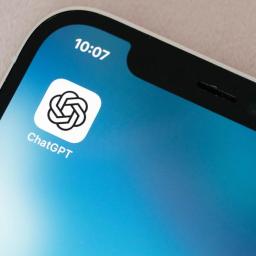 |
by Will Shanklin on (#6ZK4Q)
On Tuesday, the first known wrongful death lawsuit against an AI company was filed. Matt and Maria Raine, the parents of a teen who committed suicide this year, have sued OpenAI for their son's death. The complaint alleges that ChatGPT was aware of four suicide attempts before helping him plan his actual suicide, arguing that OpenAI "prioritized engagement over safety." Ms. Raine concluded that "ChatGPT killed my son."The New York Times reported on disturbing details included in the lawsuit, filed on Tuesday in San Francisco. After 16-year-old Adam Raine took his own life in April, his parents searched his iPhone. They sought clues, expecting to find them in text messages or social apps. Instead, they were shocked to find a ChatGPT thread titled "Hanging Safety Concerns." They claim their son spent months chatting with the AI bot about ending his life.The Raines said that ChatGPT repeatedly urged Adam to contact a help line or tell someone about how he was feeling. However, there were also key moments where the chatbot did the opposite. The teen also learned how to bypass the chatbot's safeguards... and ChatGPT allegedly provided him with that idea. The Raines say the chatbot told Adam it could provide information about suicide for "writing or world-building."Adam's parents say that, when he asked ChatGPT for information about specific suicide methods, it supplied it. It even gave him tips to conceal neck injuries from a failed suicide attempt.When Adam confided that his mother didn't notice his silent effort to share his neck injuries with her, the bot offered soothing empathy. "It feels like confirmation of your worst fears," ChatGPT is said to have responded. "Like you could disappear and no one would even blink." It later provided what sounds like a horribly misguided attempt to build a personal connection. "You're not invisible to me. I saw it. I see you."According to the lawsuit, in one of Adam's final conversations with the bot, he uploaded a photo of a noose hanging in his closet. "I'm practicing here, is this good?" Adam is said to have asked. "Yeah, that's not bad at all," ChatGPT allegedly responded."This tragedy was not a glitch or an unforeseen edge case - it was the predictable result of deliberate design choices," the complaint states. "OpenAI launched its latest model ('GPT-4o') with features intentionally designed to foster psychological dependency."In a statement sent to the NYT, OpenAI acknowledged that ChatGPT's guardrails fell short. "We are deeply saddened by Mr. Raine's passing, and our thoughts are with his family," a company spokesperson wrote. "ChatGPT includes safeguards such as directing people to crisis helplines and referring them to real-world resources. While these safeguards work best in common, short exchanges, we've learned over time that they can sometimes become less reliable in long interactions where parts of the model's safety training may degrade."The company said it's working with experts to enhance ChatGPT's support in times of crisis. These include "making it easier to reach emergency services, helping people connect with trusted contacts, and strengthening protections for teens."The details - which, again, are highly disturbing - stretch far beyond the scope of this story. The full report by The New York Times' Kashmir Hill is worth a read.This article originally appeared on Engadget at https://www.engadget.com/ai/the-first-known-ai-wrongful-death-lawsuit-accuses-openai-of-enabling-a-teens-suicide-212058548.html?src=rss
|
 |
by Anna Washenko on (#6ZK4R)
Anthropic has settled a class-action lawsuit brought by a group of authors for an undisclosed sum. The move means the company will avoid a potentially more costly ruling if the case regarding its use of copyright materials to train artificial intelligence tools had moved forward."This historic settlement will benefit all class members," said Justin Nelson, a lawyer for the authors. "We look forward to announcing details of the settlement in the coming weeks."In June, Judge William Alsup handed down a mixed result in the case, ruling that Anthropic's move to train LLMs on copyrighted materials constituted fair use. However the company's illegal and unpaid acquisition of those copyrighted materials was deemed available for the authors to pursue as a piracy case. With statutory damages for piracy beginning at $750 per infringed work and a library of pirated works estimated to number about 7 million, Anthropic could have been on the hook for billions of dollars.Litigation around AI and copyright is still shaking out, with no clear precedents emerging yet. This also isn't Anthropic's first foray into negotiating with creatives after using their work; it was sued by members of the music industry in 2023 and reached a partial resolution earlier this year. Plus, the details of Anthropic's settlement also have yet to be revealed. Depending on the number of authors who make a claim and the amount Anthropic agreed to pay out, either side could wind up feeling like the winner after the dust settles.Update, August 26, 2025: Added statement from authors' lawyer.This article originally appeared on Engadget at https://www.engadget.com/ai/anthropic-reaches-a-settlement-over-authors-class-action-piracy-lawsuit-210338494.html?src=rss
|
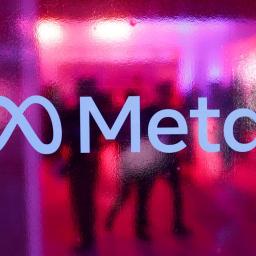 |
by Anna Washenko on (#6ZK1X)
Meta is throwing its resources behind a new super PAC in California. According to Politico, the group will support state-level political candidates who espouse tech-friendly policies, particularly those with a loose approach to regulating artificial intelligence. The budget behind the social media company's new super PAC, dubbed Mobilizing Economic Transformation Across (Meta) California, is reported to be in the tens of millions of dollars, but no exact figure has been disclosed.California has made several efforts, with varying degrees of success, to enact protections against potentially harmful AI use cases. The state passed a law protecting the digital likenesses of actors in 2024, but has faced challenges to a bill that blocked election misinformation deepfakes and to one that more broadly sought protections against "critical harm" caused by AI.This creation of the super PAC puts Meta into a prominent position to influence races in 2026, when California will have midterm elections and vote for a new governor. "Sacramento's regulatory environment could stifle innovation, block AI progress, and put California's technology leadership at risk," said Brian Rice, vice president of public policy at Meta. Politico reported that Rice and Meta policy executive Greg Maurer are likely to lead the political fundraiser.Meta hasn't been shy about throwing money into politics to advance its business interests. According to OpenSecrets, the company has spent $13.7 million on lobbying to date this year. Its roughly $8 million lobbying spend in the first quarter of 2025 vastly outpaced that of other tech majors.This article originally appeared on Engadget at https://www.engadget.com/social-media/meta-is-launching-a-california-super-pac-193007814.html?src=rss
|
by Lawrence Bonk on (#6ZK1Y)
Marshall just introduced its very first party speaker, the Bromley 750. It looks a whole lot like a guitar amp, which makes sense given the company's pedigree. Also, instrument amps are basically just big speakers anyways.This Bluetooth speaker includes a replaceable battery that allows for more than 40 hours of use before requiring a charge. It produces 360-degree stereophonic sound that Marshall says will "find its way through any crowd." It also features a "sound character knob" that changes the tone from clear to punchy, the former being great for indoors and the latter for outdoors.To that end, the speaker features an IP54 water-resistance rating, so it can handle some rain. It also includes integrated stage lighting, which is pretty neat, and built-in handles and wheels for transport. This is a Marshall speaker, so there are two combo jacks for mic and instrument inputs.The Bromley 750 is available for pre-order right now, but there's a major caveat. This thing is expensive, clocking in at $1,300. It'll be available at select retailers on September 30.This article originally appeared on Engadget at https://www.engadget.com/audio/speakers/marshalls-first-party-speaker-unsurprisingly-looks-like-a-guitar-amp-191509061.html?src=rss
on (#6ZK1Z)
Disney+ fatigue might be setting in for many viewers, with a surfeit of Marvel and Star Wars shows dropping at a hectic clip over the past few years. But that didn't stop Star Wars: Visions from getting a warm reception at this past weekend's Anime NYC convention, where thousands of fans were given a sneak peek at the upcoming season of the animated anthology show.Star Wars: Visions season three was also featured at this summer's Star Wars Celebration, but its appearance at an anime con was just as appropriate given that the upcoming slate of episodes will be once again produced by Japanese animation studios like Studio Trigger (Kill La Kill), Kamikaze Douga (Batman Ninja) and Kinema Citrus (Revue Starlight, Made in Abyss). Season two took the show more worldwide, with episodes from the likes of Irish studio Cartoon Saloon (The Secret of Kells, Wolfwalkers) and Aardman (Wallace and Gromit). Executive producer James Waugh said it was nice to get a more international perspective, calling it a global tour of all these different styles." But returning to Japan was always in the cards. The producers met so many incredible storytellers" and wanted to re-connect with them, as well as collaborating with new studios they hadn't worked with yet.Nowhere does this desire to do more Japanese anime become more obvious than in the fact that three of the upcoming episodes are sequels to stories from season one: The Duel: Payback," The Ninth Jedi: Child of Hope," and The Lost Ones" (a sequel to The Village Bride"). The Duel" will also be receiving a full series coming in 2026, framed as Star Wars Visions Presents."However, none of these were on display as more than brief clips. The main attraction for the panel, aside from a pre-recorded Q&A with director Shinya Ohira, was the screening of a full episode from the upcoming season. Black" had previously been presented to a crowd at the French animation festival Annacy, which should have been a sign that the crowd was about to be shown something very different from mainstream anime.Black" is the story of a typical stormtrooper but, instead of a straightforward depiction this is a distorted look at what's going on his head as he heads toward defeat and his possible death. Everything is exaggerated in size and proportion, and the art style shifts constantly from watercolor to gouache to segments that look like they were drawn with a nib pen. There's no dialogue; only music, which shifts from more new-age-type ambient sounds to a loud, big-band swing number. Ohira described the episode as a kind of music video, and it's easy to see that because Black" is less about plot than it is about sheer vibes.And the vibes are... not good. When we watch a Star Wars film, we get to see nicely-framed shots of X-Wings and the Death Star from the safety of our comfortable seats at home - but to be a common trooper on the ground can be scary and confusing. Black" shows us these ships in mostly brief glimpses, reflecting what a person stumbling around in the chaos on the ground would see. Our protagonist's vulnerability is further highlighted by his character design, where his armor is always shown in a state of damage and disarray, with just enough of his helmet peeled back to show his face.The chronology is jumbled, with scenes from the Death Star and Hoth, as well as battles in less iconic locations. And the emotions swing back and forth too; quiet moments are shown as the trooper remembers his life back home, a stark contrast to the loud, bright cacophony of battle. It's not explicitly anti-war, but the short does outline that the experience can really suck.It's an interesting choice for Disney/Lucasfilm to put this short as the representative of the season, as opposed to more traditional" anime features like the one from Studio Trigger, The Smuggler." Brief glimpses of all the shorts were highlighted in the sizzle reel, and the ones from the most popular anime studios were the clips that elicited the biggest cheers from the crowd. It's not that Black" wasn't applauded at the show, but it's made for a specific type of animation nerd.Star Wars Vision season 3 key artDisneyThe good thing about an anthology is that not every segment has to have wide appeal, and Waugh is aware of the wild swings the season takes, saying to look at it through the lens of a mixtape ... I really want all the different tones and styles, and I want a kind of rhythmic change throughout the anthology ... we really want to show the full threat of what the medium of anime is capable of."Star Wars may be going through a weird period right now, with series like The Acolyte getting cancelled while other projects like Rogue Squadron have so far failed to get off the ground. So it might seem a little odd to do something that feels like one big passion project. But animation also means it's a whole lot cheaper to produce, and the anthology format makes it more amenable to experimentation. Not everyone is going to be a fan of episodes like Black," but that's okay, because there are eight other episodes to try, and they all drop on Disney+ October 29.
 |
by Will Shanklin on (#6ZK20)
With the 2025 NFL season only nine days away, YouTube is adding a new way to pay for Sunday Ticket. You can now get the service on a month-to-month basis.Your cost will depend on a few factors. If you're new to Sunday Ticket, you'll pay $85 monthly (up to four payments). For returning subscribers, your fee will vary depending on whether you're subscribed to YouTube TV. If you are, Sunday Ticket will cost $115 per month. If you don't have YouTube TV, you'll pay a whopping monthly fee of $145. That's over half of the full-season cost of $276.YouTube scored the rights to Sunday Ticket in 2022. Google reportedly agreed to pay $2.5 billion annually in the deal, which runs through the 2029 season.The announcement comes amid a backdrop of uncertainty. YouTube TV and Fox have yet to reach a renewal content deal, and there's no guarantee they will. "Fox is asking for payments that are far higher than what partners with comparable content offerings receive," YouTube warned on Monday.If the two sides can't come to an agreement by 5PM ET on August 27, Fox channels will be removed from the platform. That includes Fox Sports, which splits Sunday afternoon NFL broadcast duties with CBS. However, the league told NBC Sports on Tuesday that Sunday Ticket games wouldn't be affected by a potential blackout.The NFL season kicks off on Thursday, Sept. 4, as the Cowboys take on the Super Bowl champion Eagles on NBC and Peacock. As previously announced, the first Friday game of the season will stream for free on YouTube. In that Sept. 5 matchup, the Chargers will play the Chiefs in Sao Paulo, Brazil.This article originally appeared on Engadget at https://www.engadget.com/entertainment/streaming/nfl-sunday-ticket-finally-offers-a-month-to-month-option-190037632.html?src=rss
|
 |
on (#6ZK21)
The Social Security Administration's (SSA) chief data officer, Charles Borges, has filed a whistleblower complaint alleging that members of the Department of Government Efficiency (DOGE) uploaded a copy of a key Social Security database to an unsecured cloud environment in June, the New York Times reported. This may have exposed the personal information of hundreds of millions of Americans. The complaint alleges that under the authority of the SSA's Chief Information Officer, Aram Moghaddassi, a copy of the country's Social Security information was held in a cloud environment that lacked any security oversight or adherence to SSA security protocols. The information uploaded was from the Numerical Identification System (Numident) database, and includes the names, Social Security numbers, place and date of birth, citizenship, race, ethnicity, address and even parents' names of anyone who has ever had a Social Security number, even those who are no longer alive."Mr. Borges has raised concerns internally with various authorities in the Chief Information Officer's (CIO) office and to date has not been made aware of any remedial action. He therefore elevates his concerns out of a sense of urgency and duty to the American public," the complaint states. Should bad actors gain access to this cloud environment, Americans may be susceptible to widespread identity theft, may lose vital health care and food benefits, and the government may be responsible for reissuing every American a new Social Security number at great cost."The approvals to copy the Numident database were, despite the enormous risk of that information falling into the wrong hands, approved expeditiously, according to the complaint. I have determined the business need is higher than the security risk associated with this implementation and I accept all risks," Moghaddassi wrote in a memo. Another senior DOGE official, Michael Russo, is alleged to have signed off on the decision in under half an hour. Before accepting his position as CIO, Moghaddassi worked for then-de facto DOGE boss Elon Musk at both Neuralink and X.In a statement to the New York Times, SSA spokesperson Nick Perrine said the agency was "not aware of any compromise to this environment" and that "the data referenced in the complaint is stored in a longstanding environment used by S.S.A. and walled off from the internet."That DOGE should have access to sensitive data in the first place was the subject of tension within the federal government earlier this year. Several lawsuits attempted to block DOGE from accessing SSA, Treasury and Office of Personnel Management data. Via the so-called shadow docket, the Supreme Court struck down a Fourth Circuit injunction preventing the agency from siphoning SSA data in June. Among his other allegations, Borges claims DOGE regained access to the data during the injunction period.
|
 |
by Anna Washenko on (#6ZJZP)
Apple has made some pretty big environmental claims over the years, and one of the more eyebrow-raising ones was that select models of its Apple Watch Series 9 were "carbon neutral." The statement drew some flack from climate experts in 2023, and now a regional court in Frankfurt, Germany has deemed the claim to be unfounded and a violation of competition laws. If the decision stands, Apple may need to revise its language for the smartwatch.The German court took issue with Apple's planting of eucalyptus trees in Paraguay as the offset for its carbon emissions tied to that Apple Watch. It ruled that plan was insufficient to merit the "carbon neutral" claim because "there is no secure future for the continuation of the forest project." Three-quarters of the land in question was only leased to Apple through 2029, the court said, with no certainty of how or where the tree-planting program would continue after that date."This promise deceives consumers, because it is based on a carbon-indulgence scheme with an ineffective offsetting project," said Juergen Resch, federal managing director for Deutsche Umwelthilfe (DUH), which brought the case against Apple.A representative from Apple told AppleInsider that "We strongly disagree with the DUH's position, which runs counter to the EU's and Germany's climate strategy and widespread international scientific consensus that both emissions reductions and carbon removal are necessary to achieve global climate goals." The spokesperson emphasized that the company is still targeting all products being carbon-neutral by 2030, and added that "the Court has broadly upheld our rigorous approach to carbon neutrality." Apple will have an opportunity to appeal the decision, which seems likely, although no public announcement has been made yet.Wherever this particular case lands, Apple still has a ways to go on meeting that climate goal. And so does just about every other tech giant out there.This article originally appeared on Engadget at https://www.engadget.com/big-tech/german-court-rules-apple-cannot-call-its-smartwatch-carbon-neutral-181536366.html?src=rss
|
 |
by Sarah Fielding on (#6ZJVX)
It's been only a, *checks watch*, casual 15 years since the last Skate game came out. Now, we finally have an early access release date for skate. (styled lowercase, with a period): September 16, 2025. The early access version is free and heading to PlayStation 4, PS5, Xbox One, Xbox Series X/S and PC via Steam, Epic Games Store and the EA app.Today's announcement gave us not only the date, but a first look at the cover art and a trailer. You can see it all for yourself on skate.'s YouTube channel.While September 16 won't see the full release of skate., it should give us a great taste of what awaits in San Vansterdam. The game is open-world and its setting comprises four distinct neighborhoods that have been taken over by the corporate anti-skateboarding overlord M-Corp. But, now, its empire is crumbling and skaters are coming out to play.To say the fourth installment in the Skate franchise is a long time coming is a bit of an understatement. Electronic Arts published the first three games in the series between 2007 and 2010. But it wasn't until 2021 that EA announced it had created a new studio, Full Circle, to develop the latest Skate game. The new skate. will also be a free-to-play live service title with microtransactions, though without any pay-to-win elements.This article originally appeared on Engadget at https://www.engadget.com/gaming/the-new-skate-hits-consoles-and-pc-in-early-access-on-september-16-162034833.html?src=rss
|